When I rented a car for my visit of west Crete, the owner of the agency recommended that I also visit the town of Falasarna in order to have a look at the local beach. In her opinion, this is the best beach in the west part of the island. But, in order to get to this place and the beach, while driving from the direction of Elafonisi Beach, it took me about an hour and a half just to cover some 50 km. The reason for this is the road that leads through mountains and has a huge number of curves, but the landscapes were gorgeous and I did not mind in the least to drive there. I was especially glad that I could relax and enjoy when I realised that the small car I had rented was indeed very good and drove perfectly well. Uphill, in the curves...
At some point I took advantage of a wide clearing by the road in order to stop there and take a photo of the view at the west coast of Crete.
 View at the west coast of Crete
View at the west coast of Crete
After a while I got closer to Falasarna, also from the level of the mountains which enabled me again to have a nice view. I was in no hurry, so I made stops at different points in order to have a better look at various details.
 View at the bay by the town of Falasarna
View at the bay by the town of Falasarna
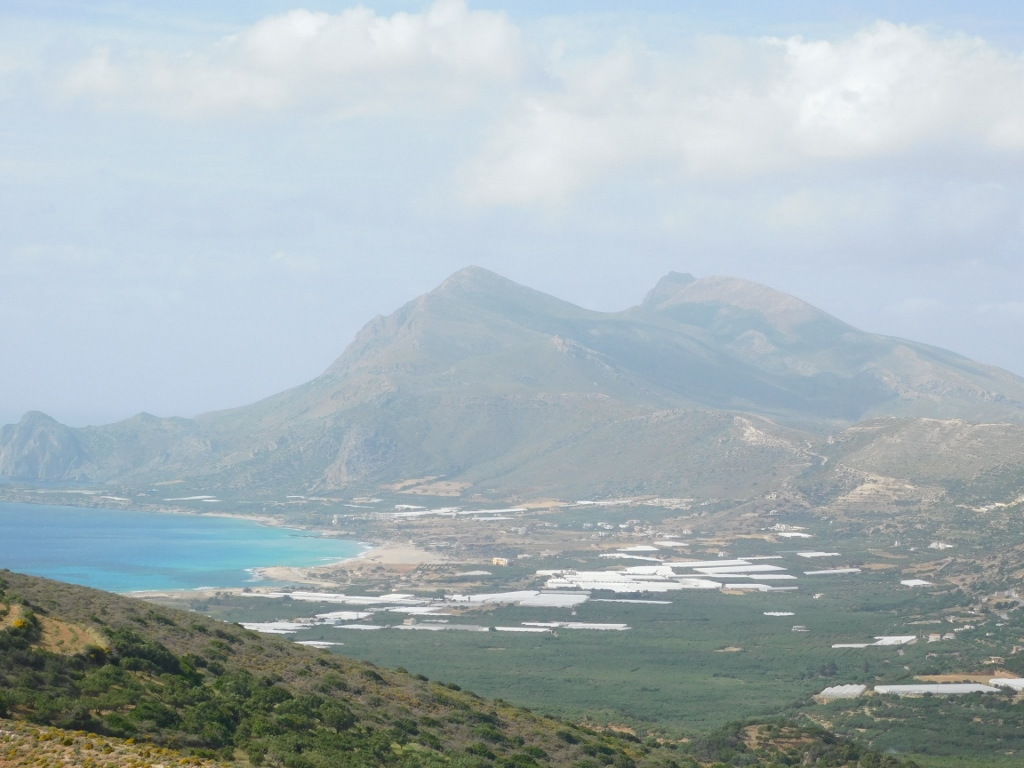 View at the bay by the town of Falasarna
View at the bay by the town of Falasarna
In the past, Falasarna flourished during the Hellenistic period and nowadays, north of the town, by a promontory, one can visit an archaeological site. Today, Falasarna is a centre of agricultural production, as well as a tourist destination, precisely because of its long sand beach.
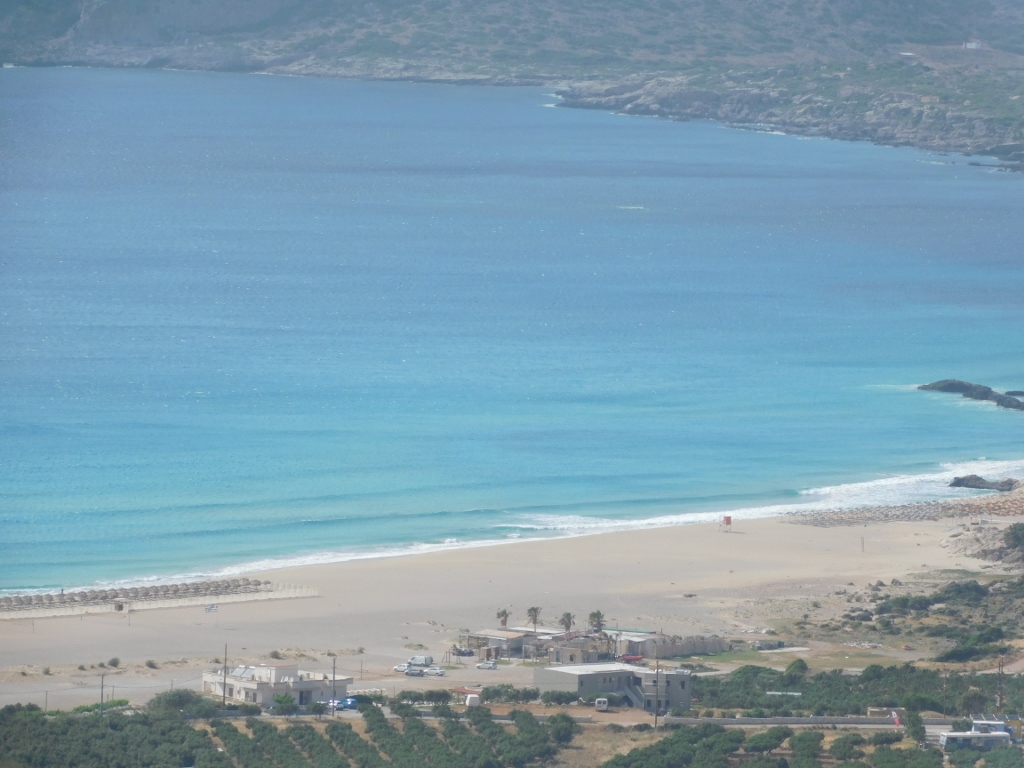 Big Beach in Falasarna
Big Beach in Falasarna
But, in Falasarna there are several beaches arranged along the shore of a wide bay and separated by rocks. I drove to a viewpoint from where I had a nice view at different beaches, but I had no desire to get down to the water itself. It was May, the water was for sure far too cold for me and there was still this very strong wind.
 One of the beaches in Falasarna
One of the beaches in Falasarna
 One of the beaches in Falasarna
One of the beaches in Falasarna
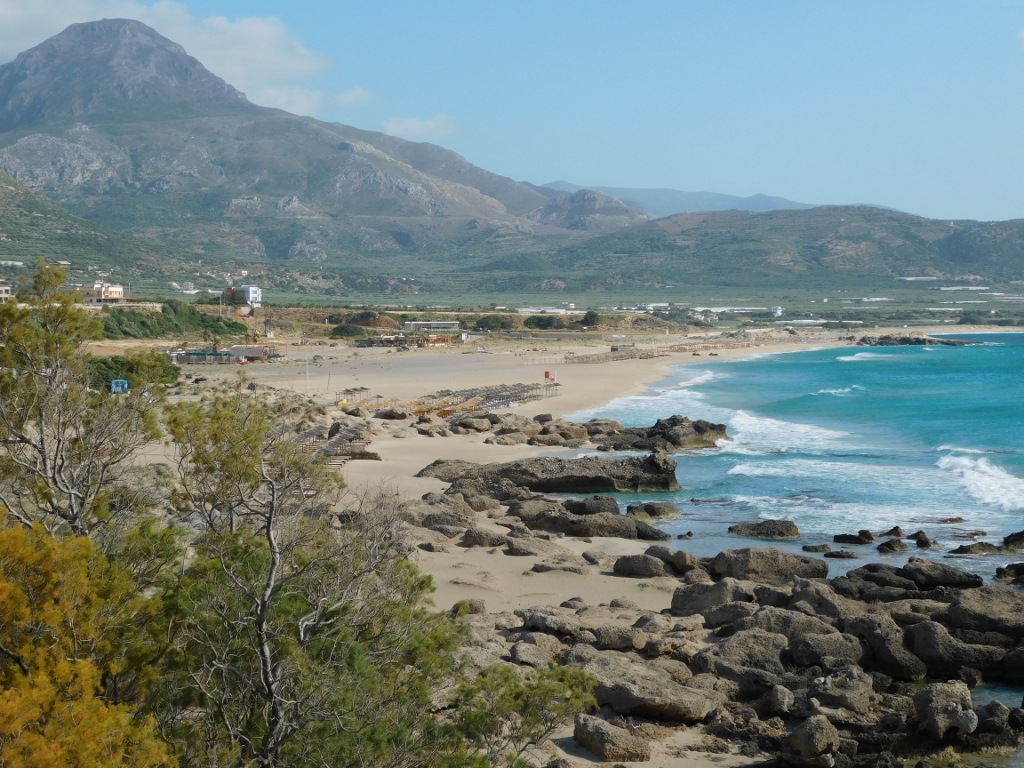 One of the beaches in Falasarna
One of the beaches in Falasarna
After this, exceptionally content, I returned to Chania where I handed the car back to the agency and then I walked down to the Old Venetian Port of Chania. Like earlier during the day, the water in the bay was still choppy, but at least it did not pour.
 Old Venetian Port of Chania
Old Venetian Port of Chania
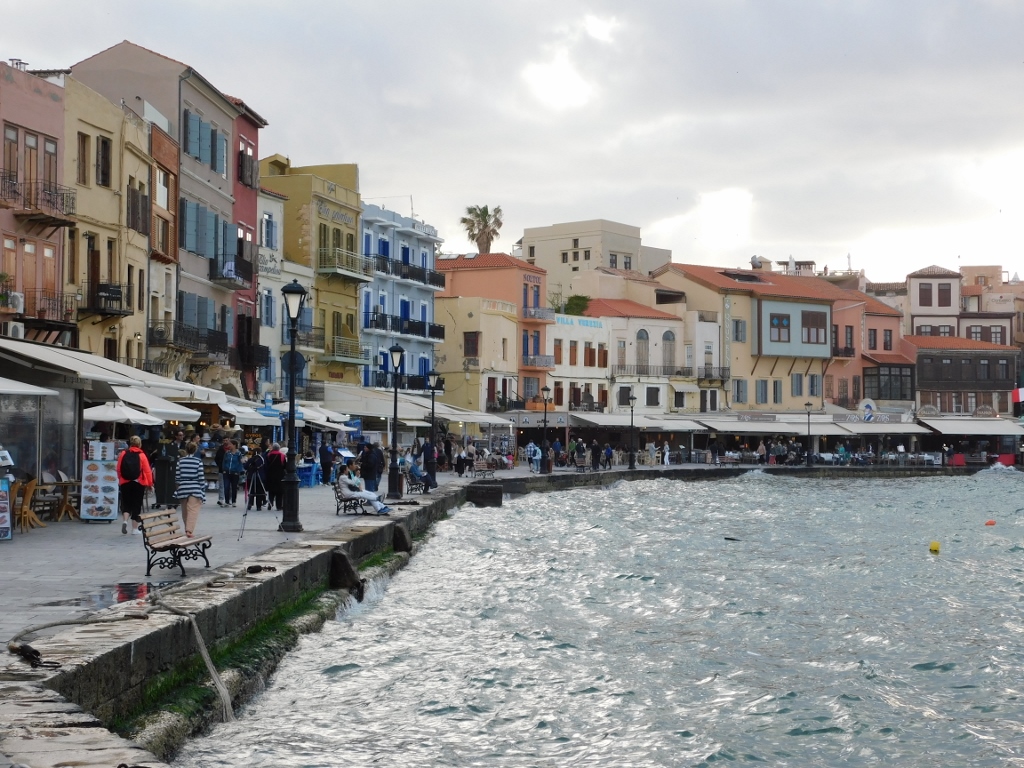 Old Venetian Port of Chania
Old Venetian Port of Chania
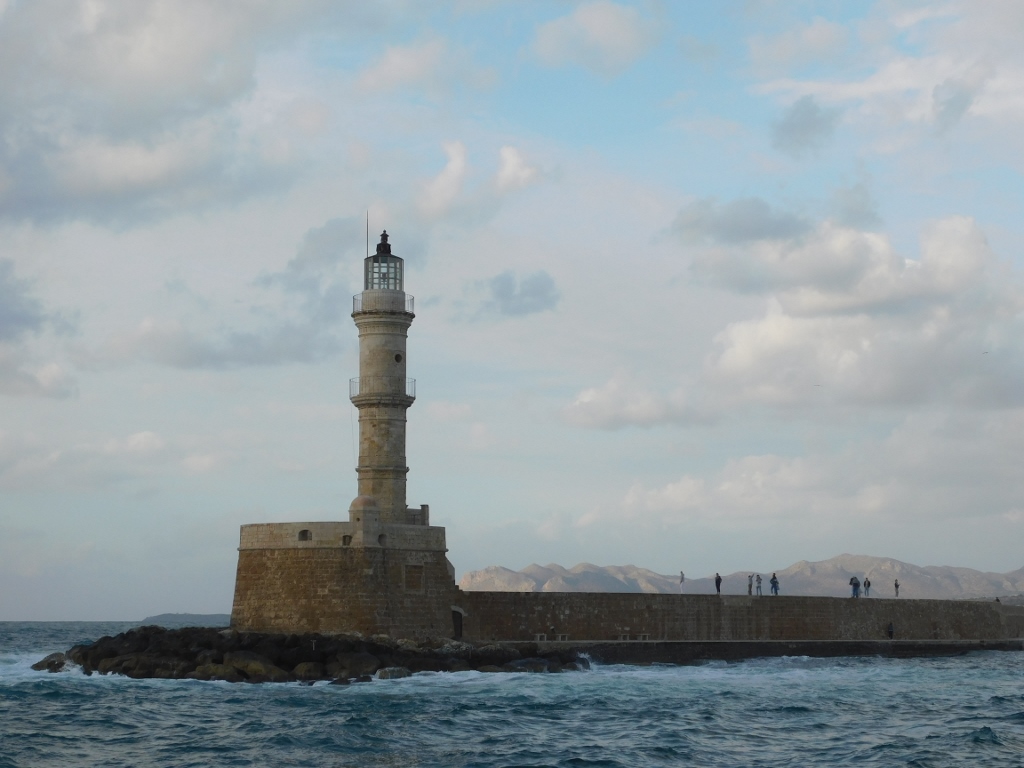 Old Venetian Port of Chania
Old Venetian Port of Chania
First I went to the rented flat where I left the surplus of the things I carried and then I headed for the west part of the town where Nea Chora Beach is located and more importantly – a myriad of restaurants. I was hungry.
Admittedly, on my way I did enjoy the effects of the turbulent weather – the sky with the sun and the heavy clouds, still strong wind, as well as the very rough sea.
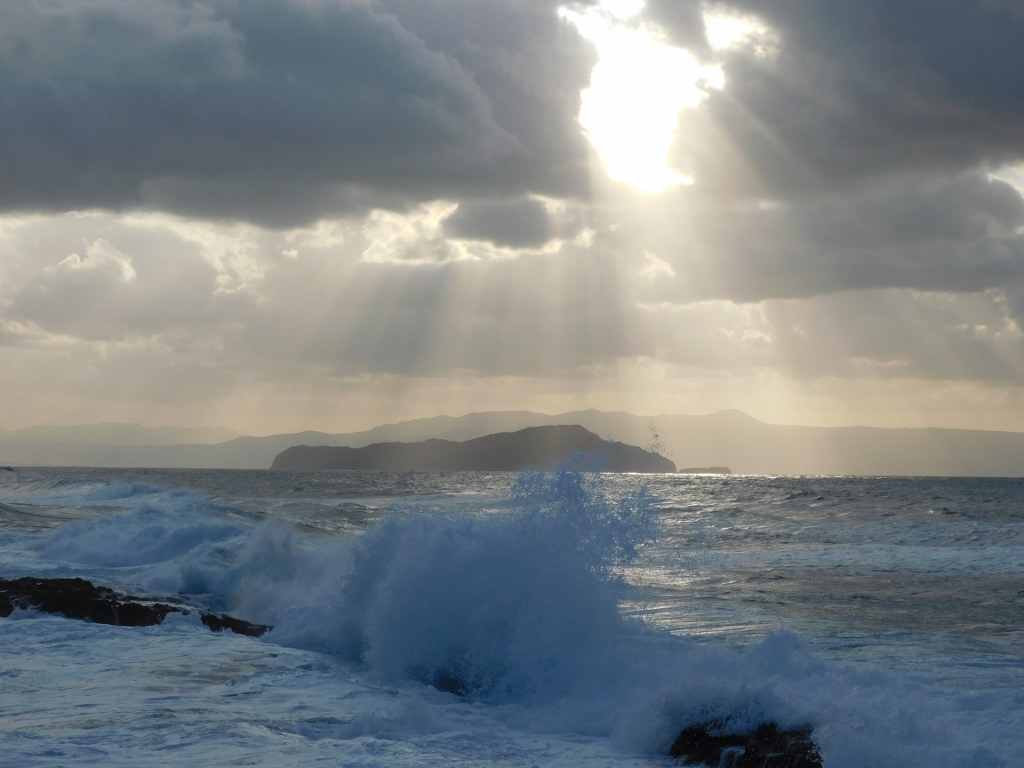 Restless weather in Chania
Restless weather in Chania
On the other side I could see sections of the ramparts that surround the old part of Chania from the west side and they are called the West Venetian Walls. When I first arrived in Chania, on my way from the coach terminal to the flat I had rented in the old part of the town, I even climbed these walls a little (this was the path suggested to me by the map on my phone), but at the time I was pulling my bag and was not in the mood to take any photos.
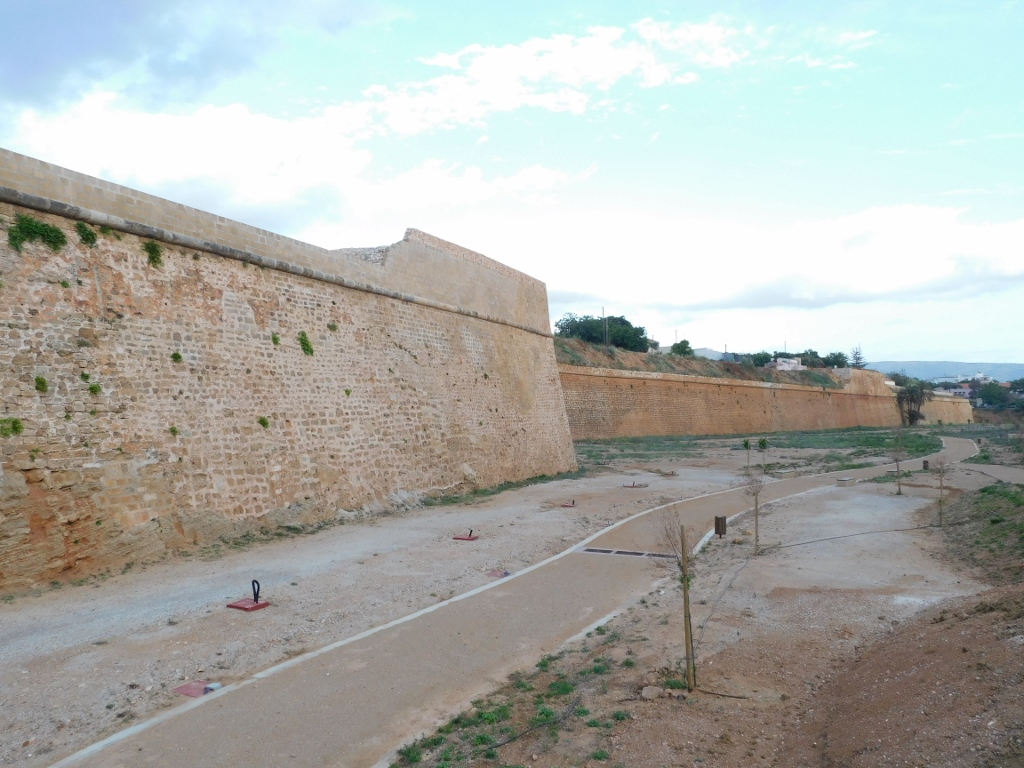 Part of the West Venetian Walls
Part of the West Venetian Walls
And then I got to the Nea Chora Beach area where I went to a particular restaurant recommended to me by the man from the agency where I returned the car. I had an absolutely great dinner there – a starter, a main course including wine and even a dessert.
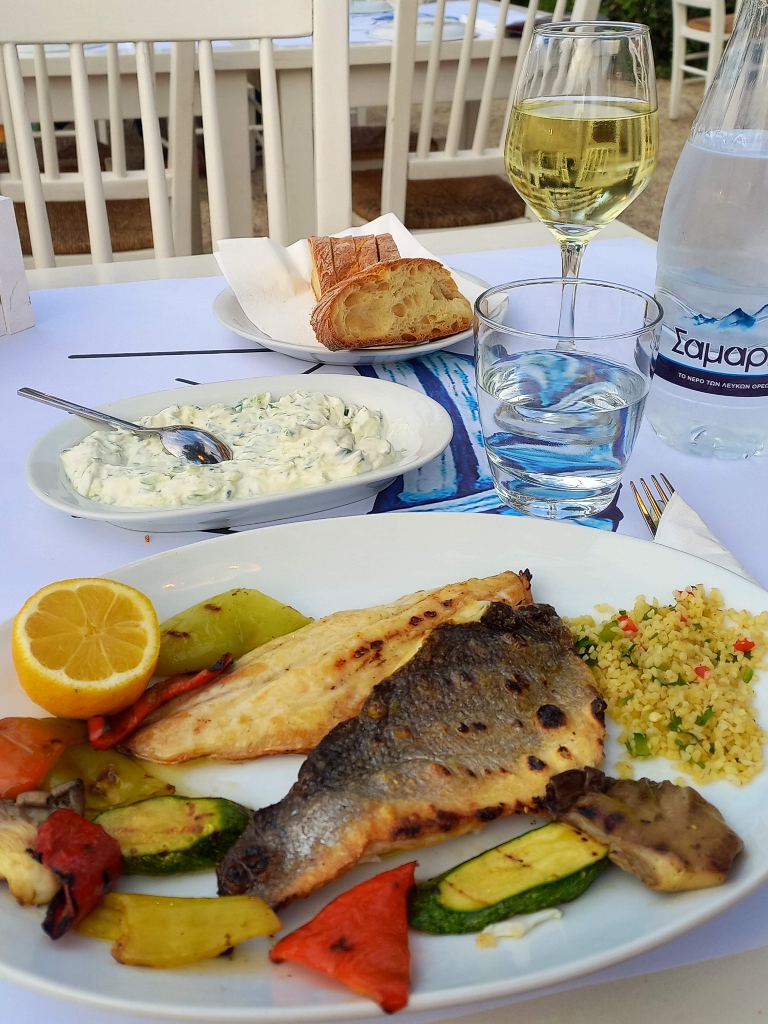 A part of the dinner at the Nea Chora Beach
A part of the dinner at the Nea Chora Beach
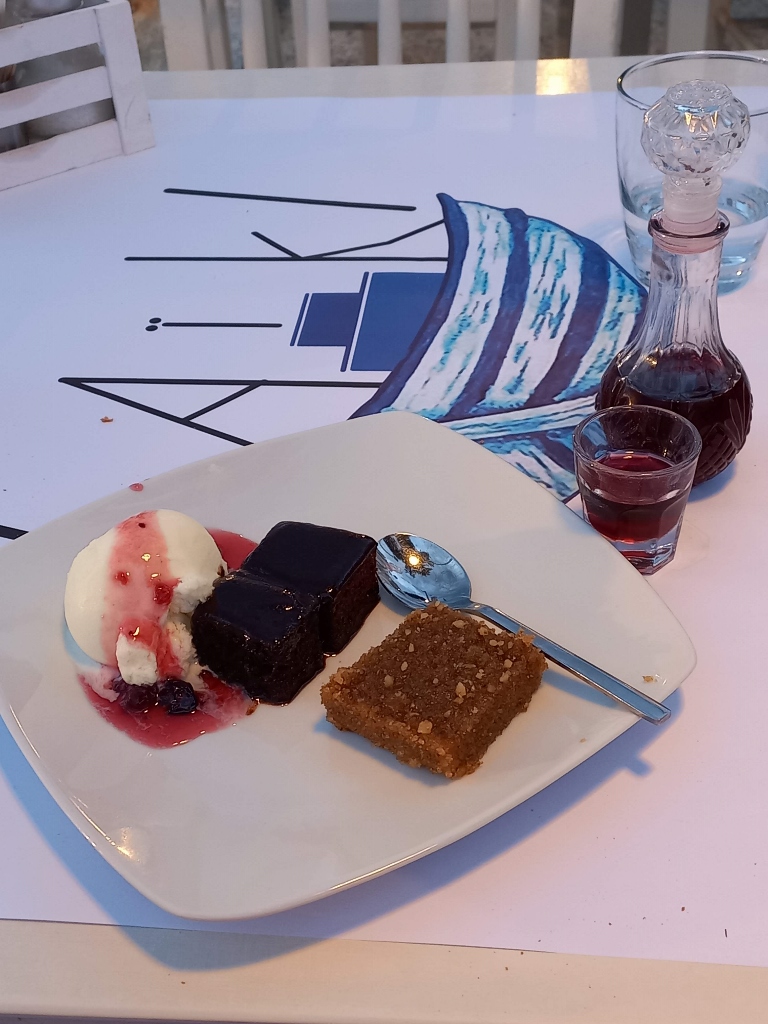 A part of the dinner at the Nea Chora Beach
A part of the dinner at the Nea Chora Beach
By the time I had finished with my meal, the weather had calmed down and at dusk I returned to the flat very content with the whole day. Then I packed most of my things, since I was to continue my travel around Crete the next day.
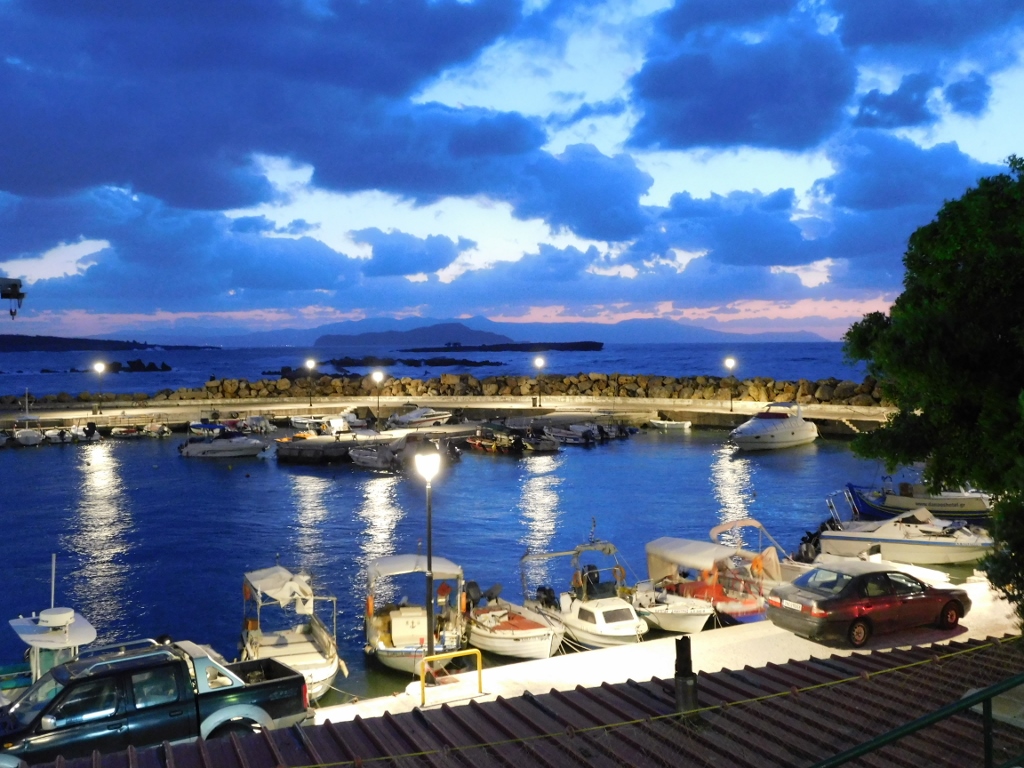 Twilight in Chania
Twilight in Chania
Still, the following day I did not leave Chania early, so I used a good deal of the morning to walk a little more around this exceptionally lovely and picturesque town.
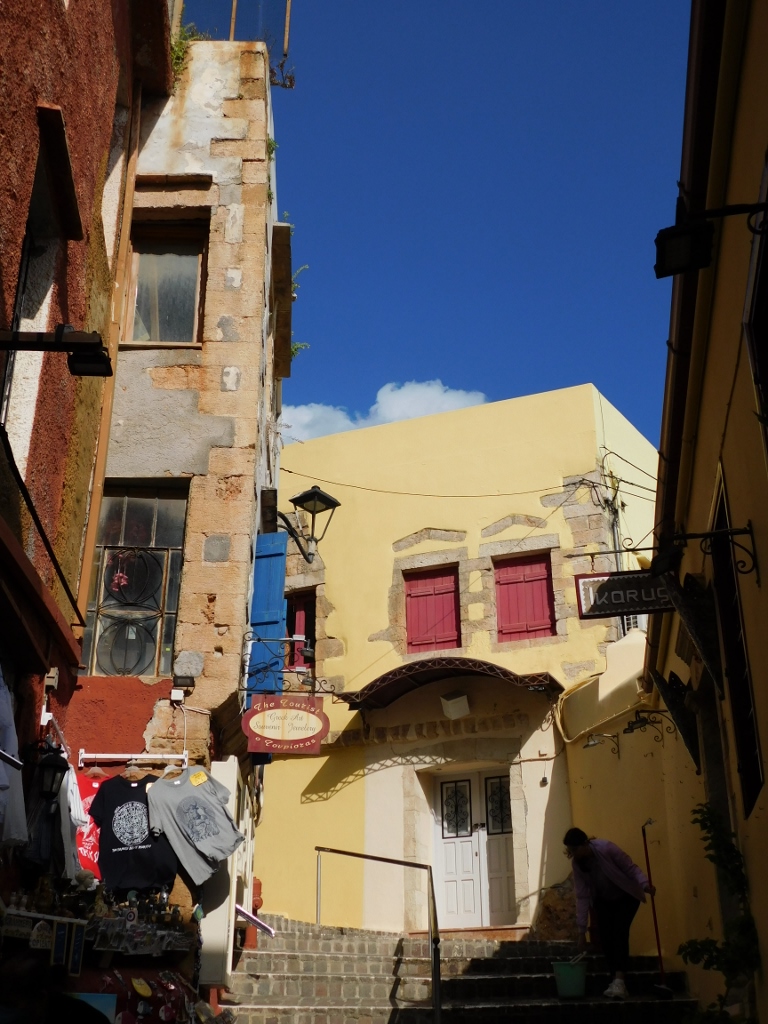 Chania, a detail
Chania, a detail
Along the way I stopped for a morning coffee. I also realised that it was way too early for most of the visitors, plus it was still not the high season, so the restaurants and cafés were mostly empty, but they certainly welcomed the guests.
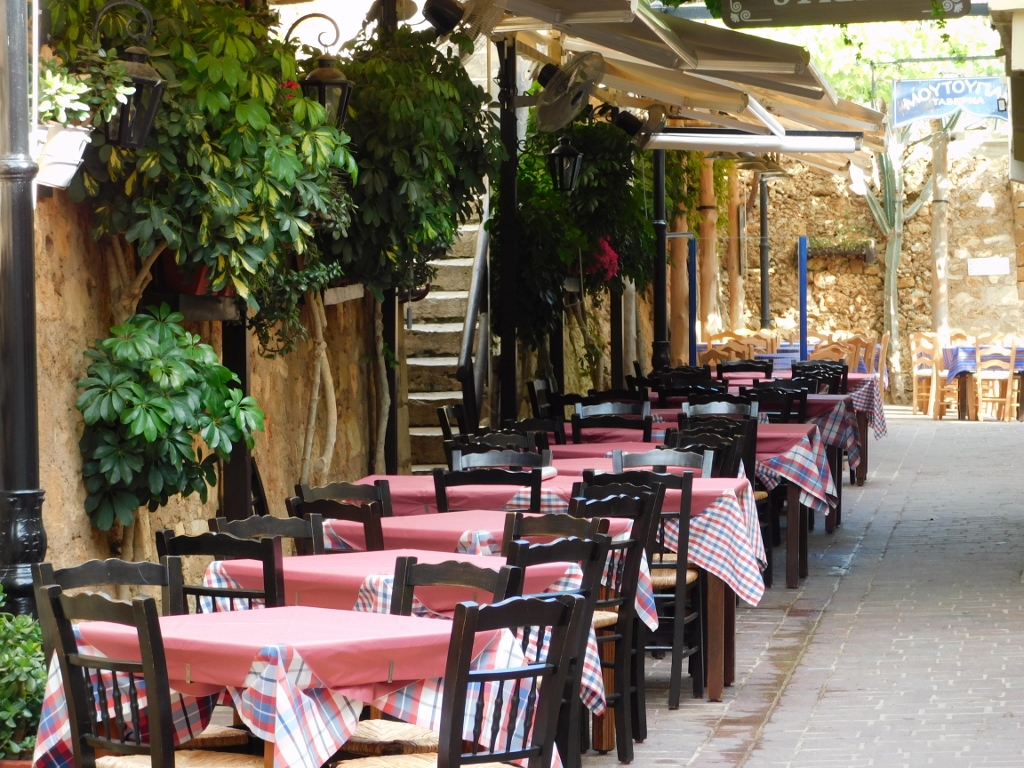 Chania, a detail
Chania, a detail
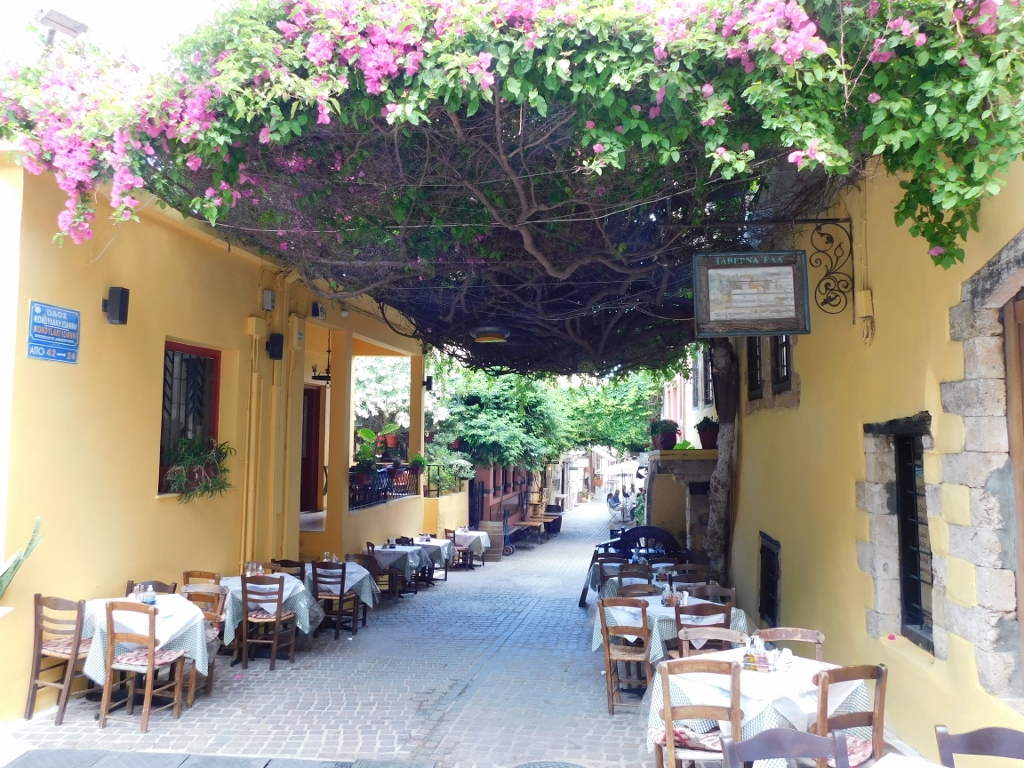 Chania, a detail
Chania, a detail
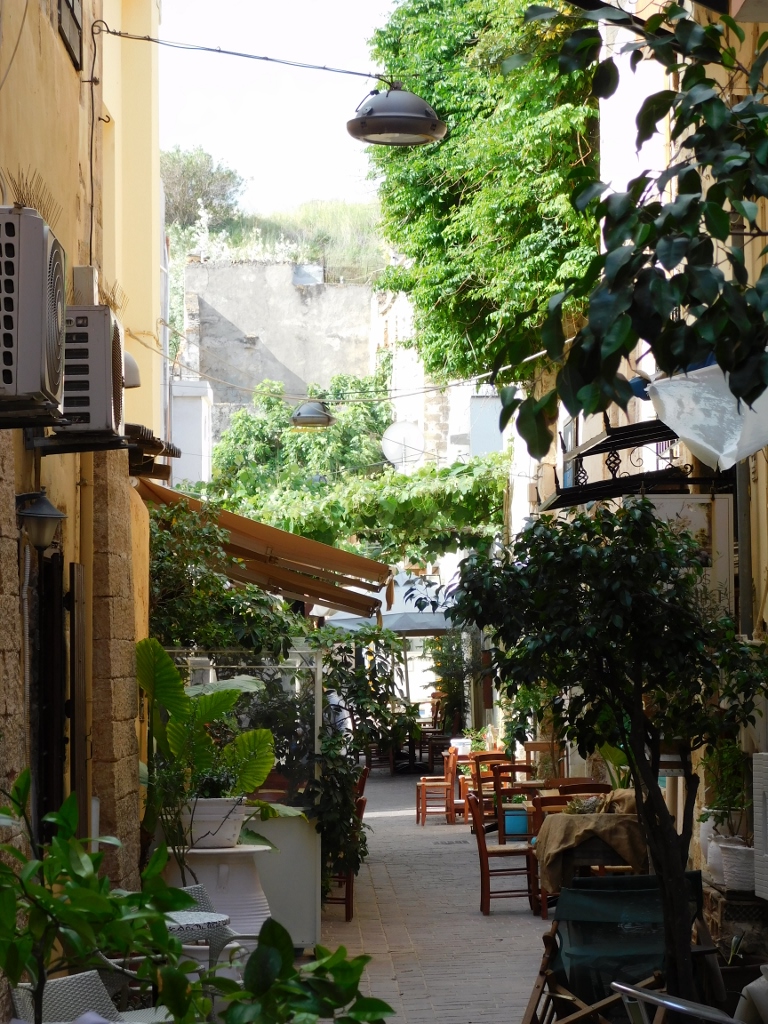 Chania, a detail
Chania, a detail
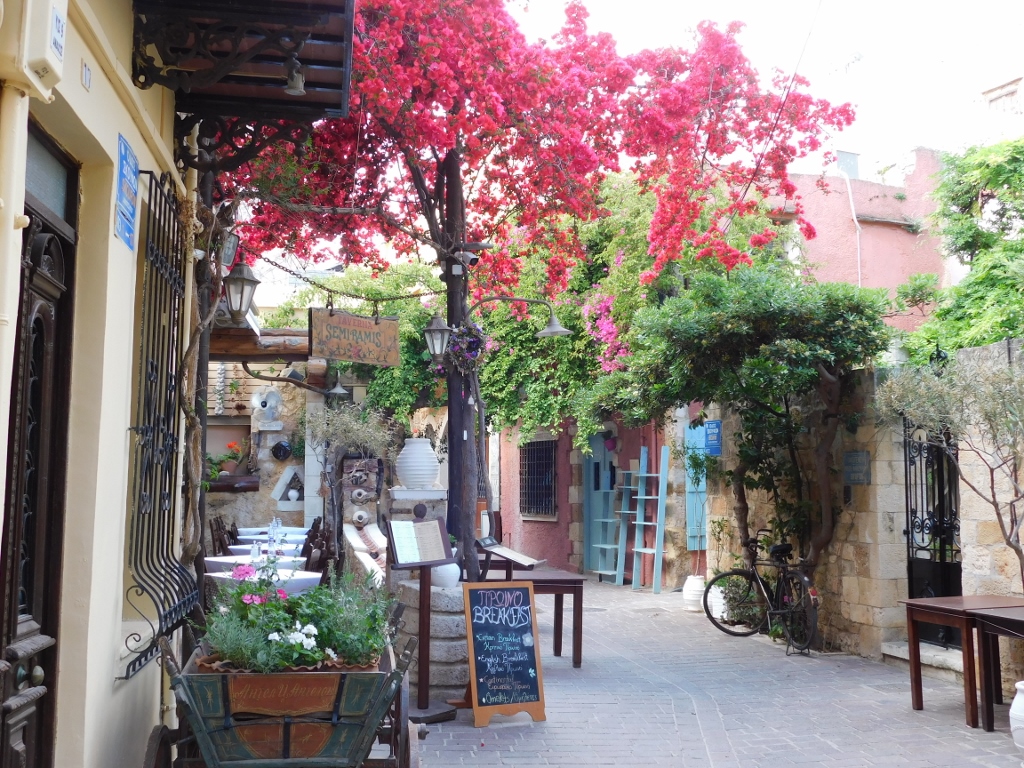 Chania, a detail
Chania, a detail
While walking through the west part of old Chania, I passed by the Etz Hayyim Synagogue. The synagogue was built for the needs of the Romaniote Jews, an ethnic Jewish community that speaks Greek and that traditionally inhabits the area of east Mediterranean. When reading some information about the synagogue and the Jews that used to live in Crete, I came across a completely incredible piece of data.
Around the middle of 1944, the Germans in Crete managed to arrest almost all of the Jews and then they boarded them, along with local resistance fighters and a number of Italian prisoners of war, onto a ship that was supposed to take them to Piraeus and further to the concentration camps in Europe. But the ship and her unfortunate passengers did not reach the original destination since she was torpedoed by a British submarine. Most of the people were killed on the occasion, with very few survivors (the historians do not agree about the figure).
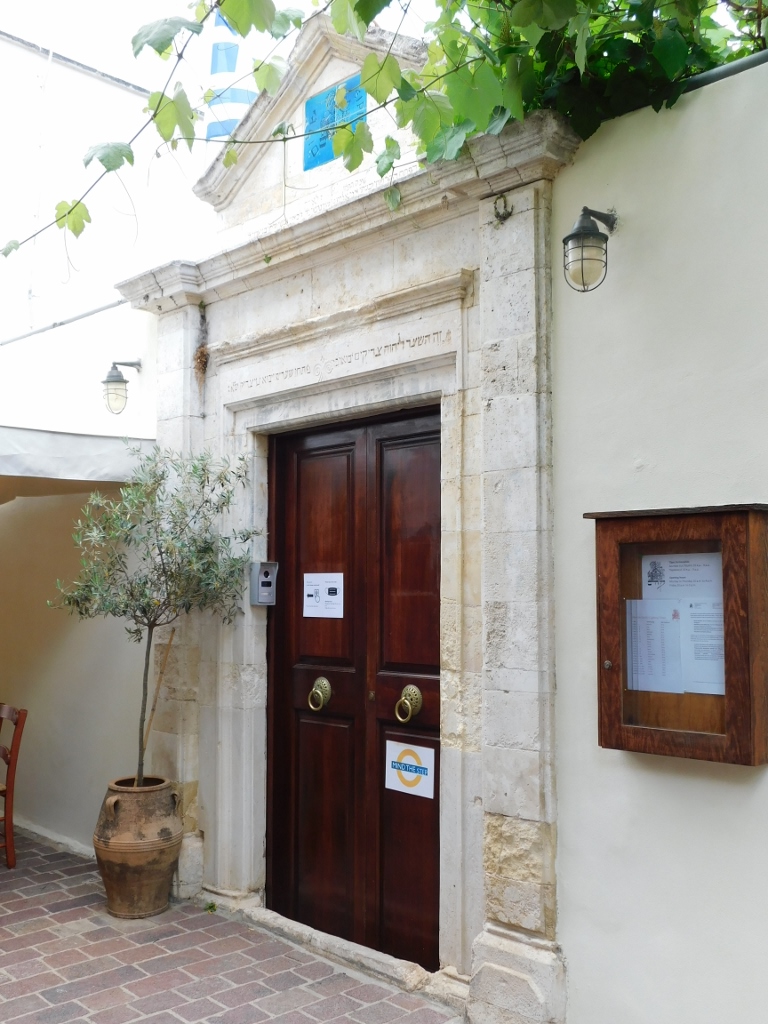 Etz Hayyim Synagogue in Chania
Etz Hayyim Synagogue in Chania
After this I continued leisurely with my walk around the east part of old Chania looking back once again at the pretty sights from the west parts of the town.
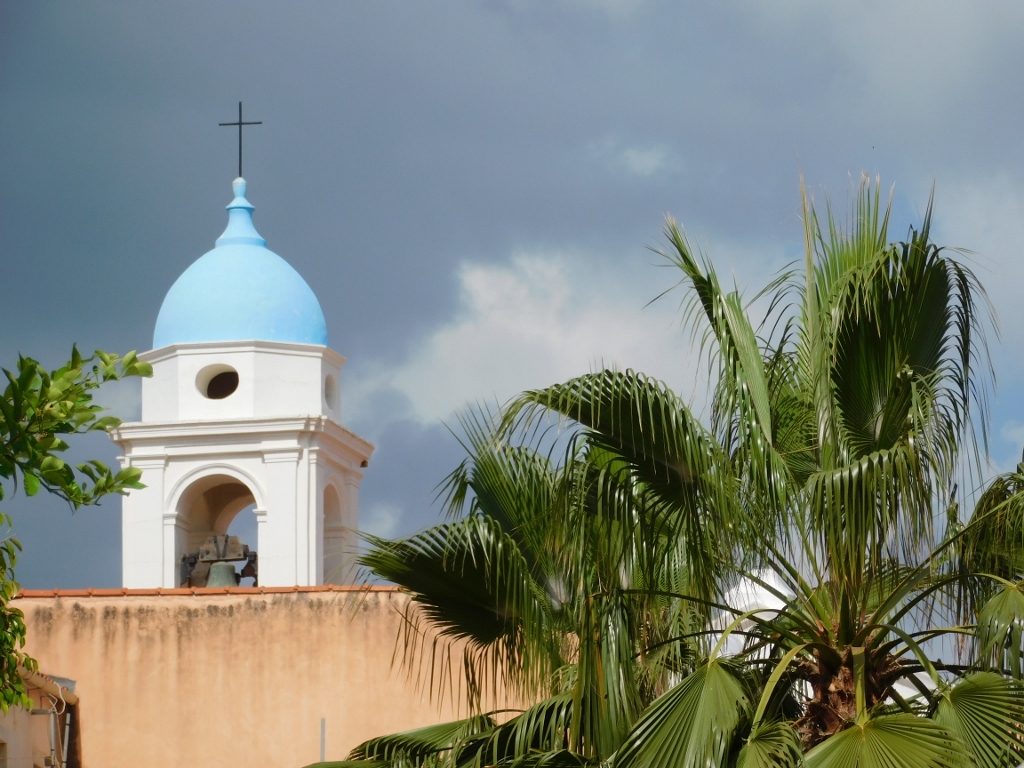 Chania, a detail
Chania, a detail
I passed again, by a different route, beside the remains of different cultures that are typical of entire Crete and reflect its past. There were archaeological sites with remains of the Minoan civilisation, a hamman or the Ottoman baths, as well as a part of the walls built by the Byzantines in the VII century, before the Venetians built new, exterior fortifications later on.
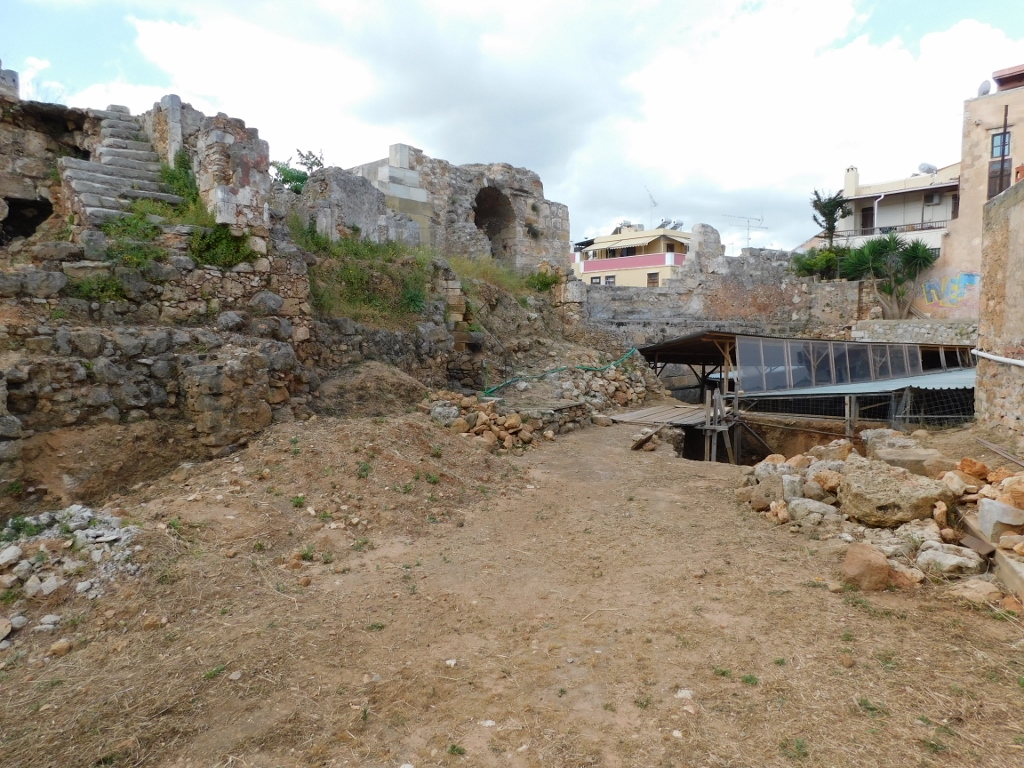 Explorations of the remains of Minoan Kydonia
Explorations of the remains of Minoan Kydonia
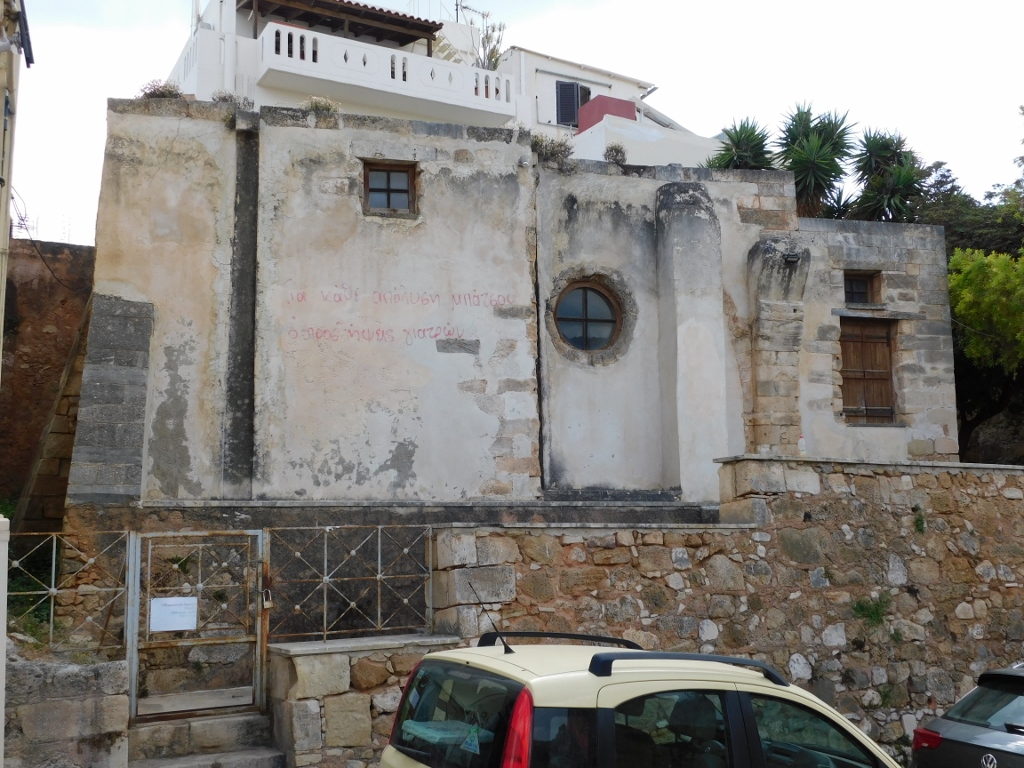 Ottoman baths
Ottoman baths
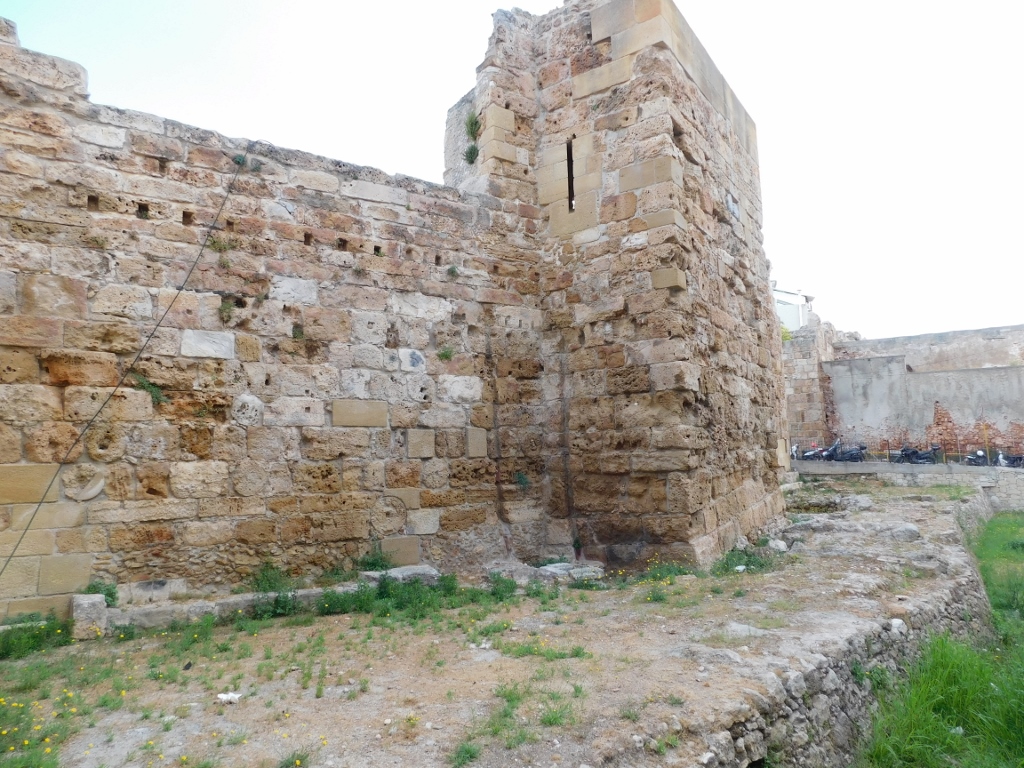 Byzantine walls
Byzantine walls
Once again I walked along the picturesque Old Venetian Port of Chania and then I had to return to the rented flat, take my things and walk to the coach terminal. My next destination was the town of Rethimno.
 Old Venetian Port of Chania
Old Venetian Port of Chania
Many people say that Rethimno is the place with the best preserved mixture of the Venetian and the Ottoman influences. As for me, I must say that it would be difficult to decide which place I liked more – Chania or Rethimno. Luckily, this is not necessary and the visitor can just as well enjoy both places that are some 65 km one from the other and they are both on the north shore of Crete.
Having reached the coach terminal in Rethimno, I got my bag and headed slowly towards the old town, but first I took a photo of the Venetian Fortress from the coast.
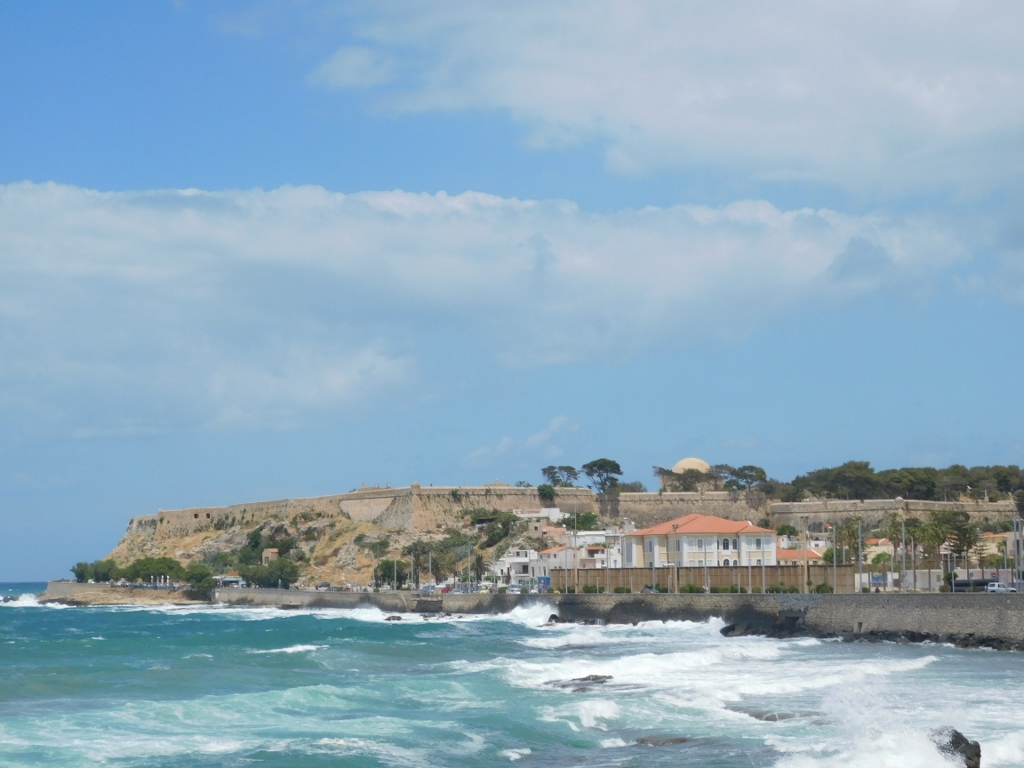 Rethimno, a detail
Rethimno, a detail
Although I could certainly approach the old town in which my hotel was by walking first along the shore, I decided to meander through the streets since the map on my mobile phone showed this to be the shortest way. Out of nowhere, some feeling of tiredness overwhelmed me and it was important for me to pull my bag for as short as possible.
When I moved from the more modern streets into the realm of the old town, I was quite stunned by the beauty and the picturesqueness of the streets I was walking through and that were not intended for cars at all. Still, I did not hang around nor did I take any photos, since I wanted to get rid of the bag and any surplus things.
Once I settled in my room, I realised the hotel had a large roof-top terrace and so I dashed up at once. It was a pity that it was still very, very windy and therefore I had no intention of sitting there, but I did take the advantage of the fine weather and the beautiful view in order to take some photos.
 Rethimno, view at the old town and the fortress
Rethimno, view at the old town and the fortress
 Rethimno, view at the old town
Rethimno, view at the old town
Then I withdrew to my room for a short while in order to rest a little, after which I went out again and started with my walk.
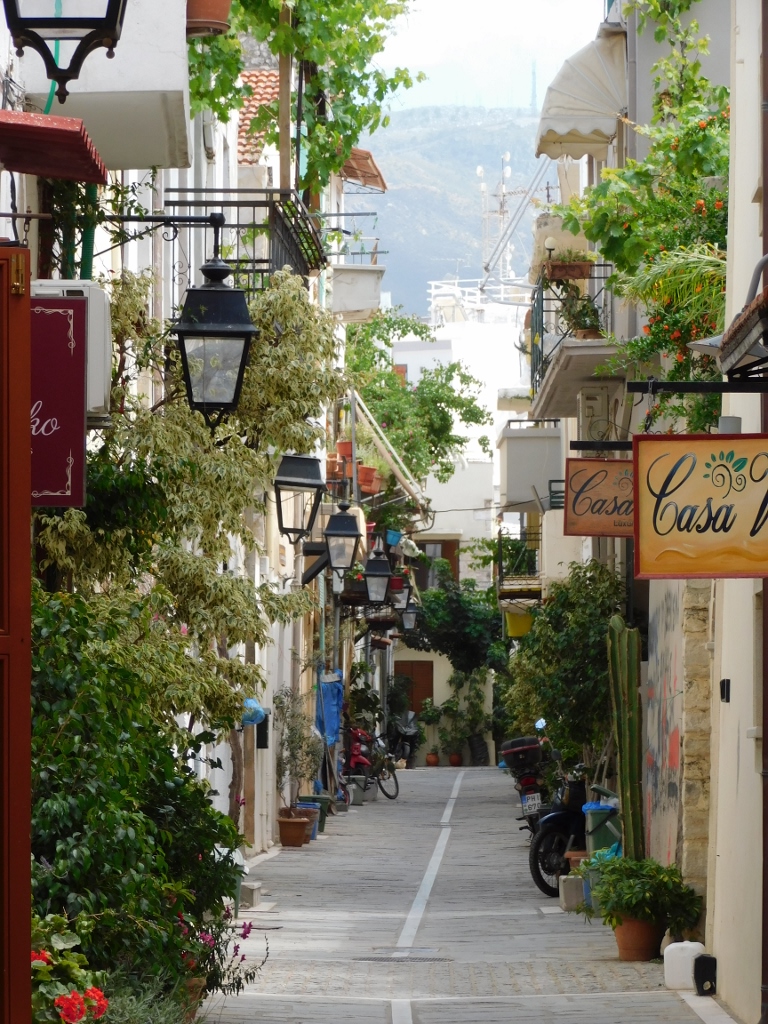 Rethimno, a small street where my hotel was
Rethimno, a small street where my hotel was
First I went to a wider area within a nearby street where there was the Church of Our Lady of Angels built in the first half of the 17th century, i.e., during the last years when the Venetians ruled Rethimno (and Crete).
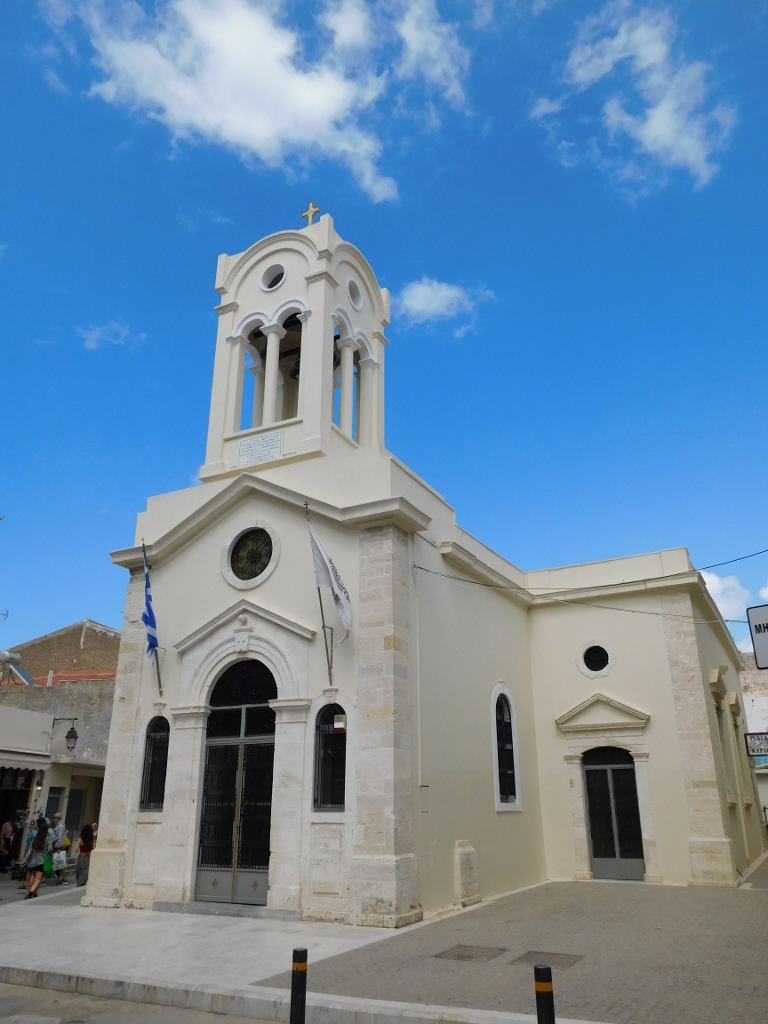 Rethimno, Church of Our Lady of Angels
Rethimno, Church of Our Lady of Angels
Right beside the church I also noticed a house that had one of the architectural characteristics of Rethimno. These are covered balconies typical of the Ottoman architecture and there are around 70 of them in Rethimno.
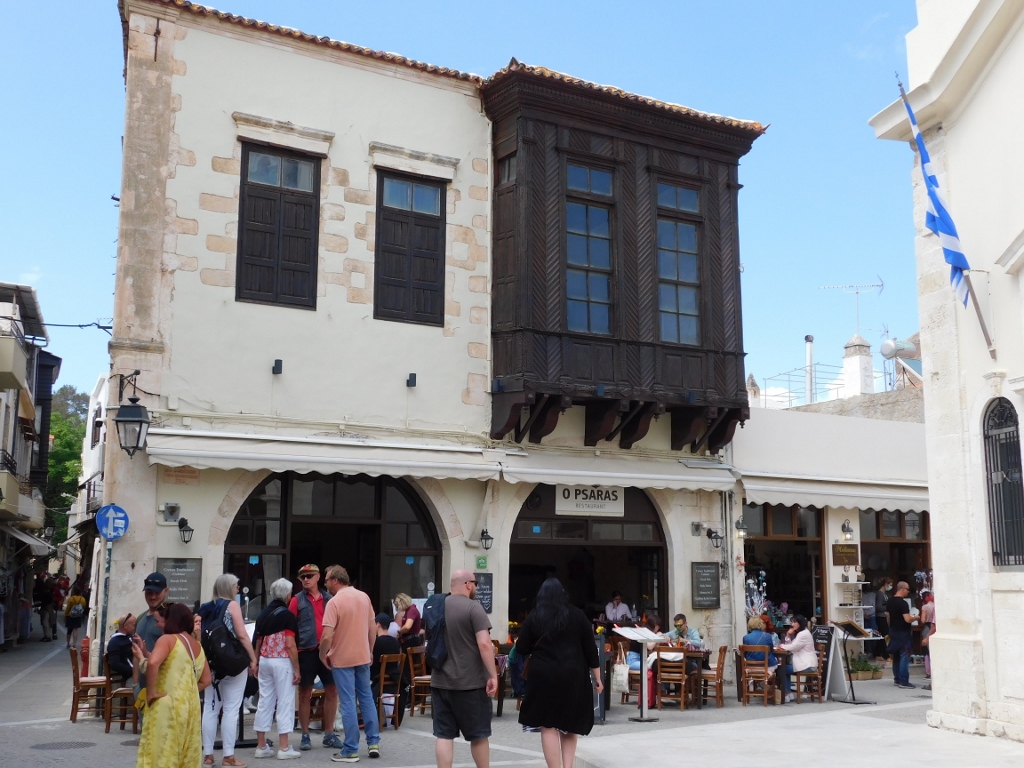 Rethimno, a detail
Rethimno, a detail
If you pay attention, they are easy to spot. Some of them are in a better or a less good state.
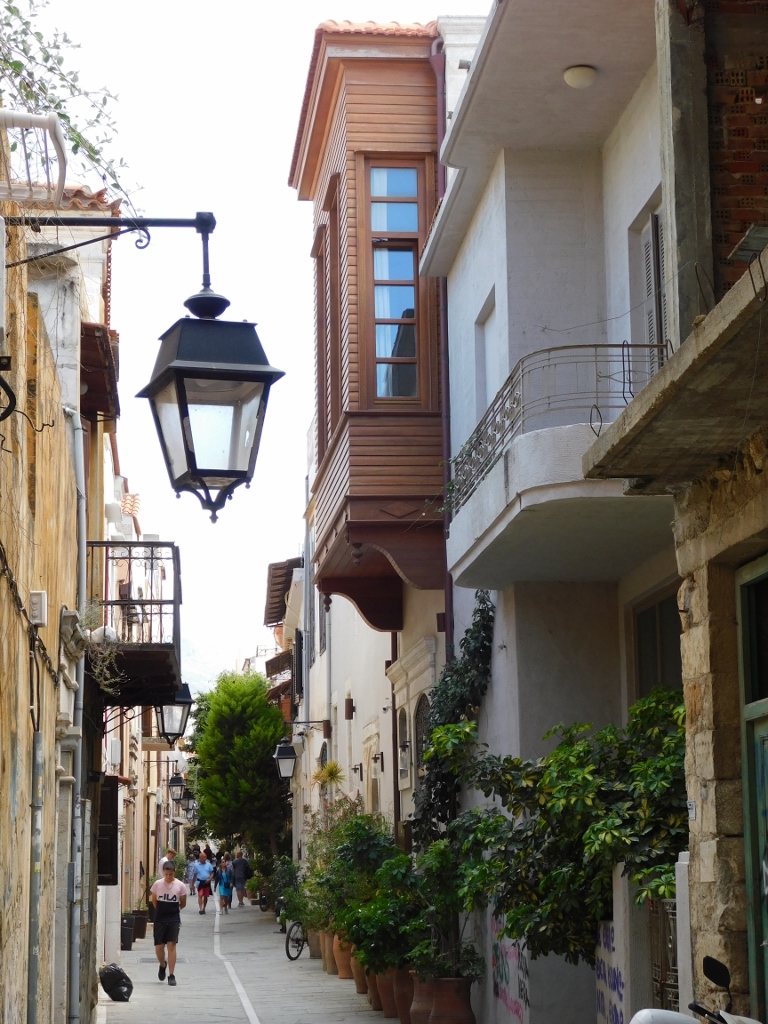 Rethimno, a detail
Rethimno, a detail
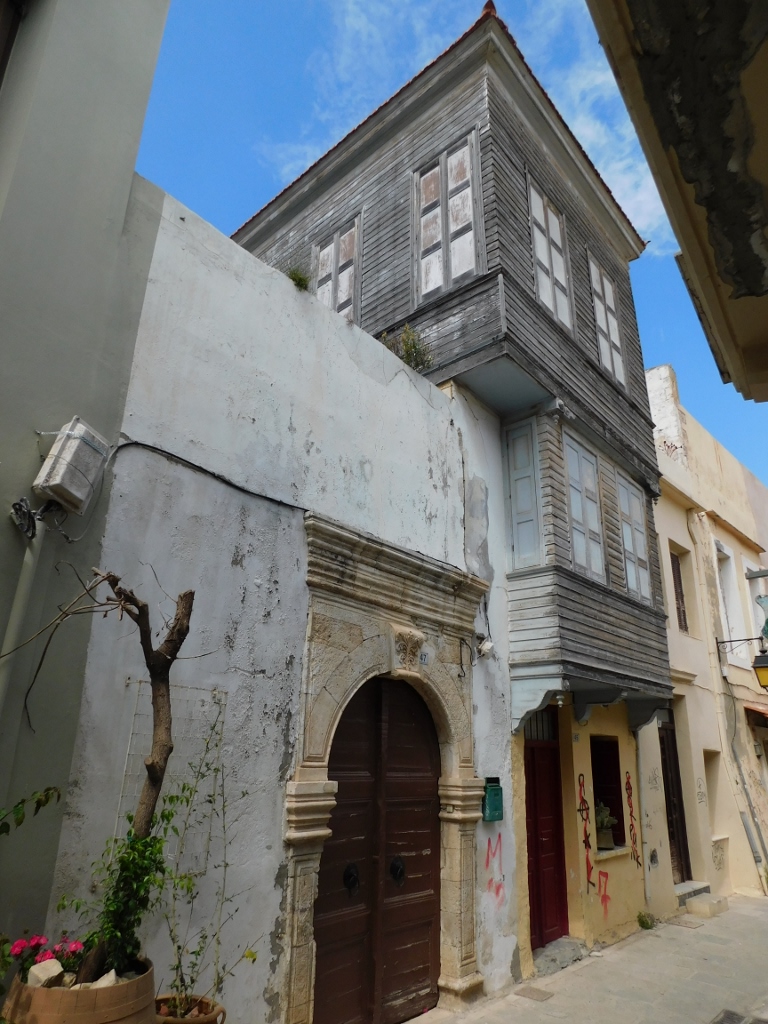 Rethimno, a detail
Rethimno, a detail
But, Rethimno does not have remains only of the Ottoman architecture. Many of the buildings and a large number of details date back to the period when the Venetian Republic ruled Crete (1212-1669).
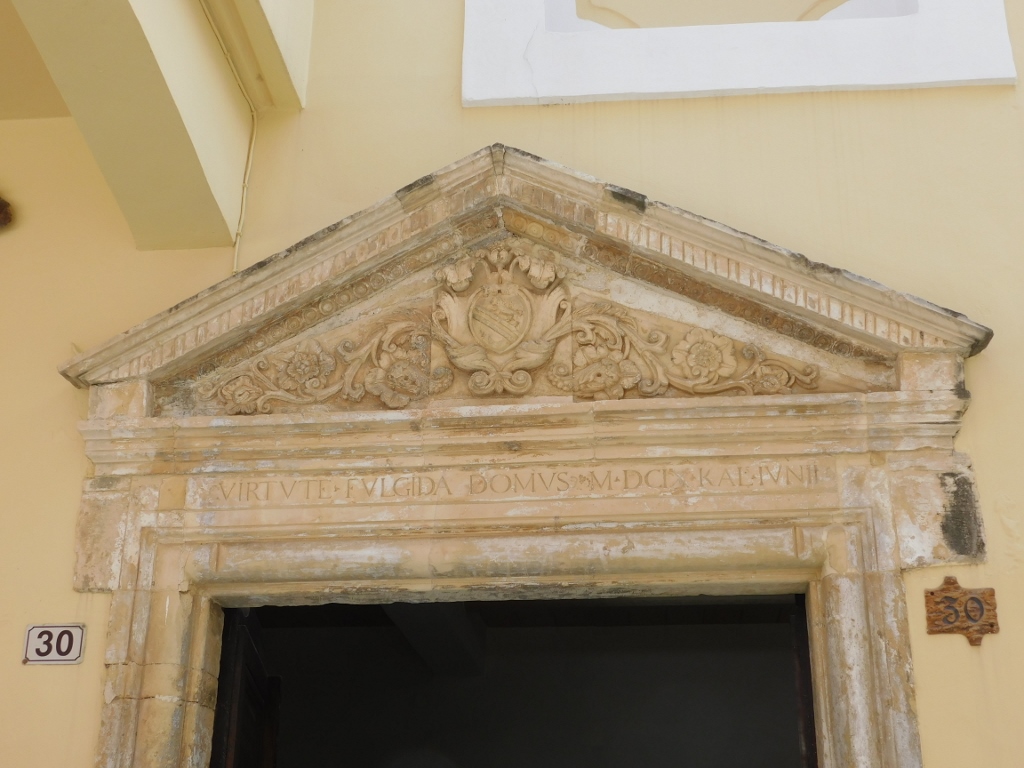 Stone doorway from 1609
Stone doorway from 1609
And there are also structures that are a mixture of the Venetian and the Ottoman elements, such as Neratze or Neradje Mosque.
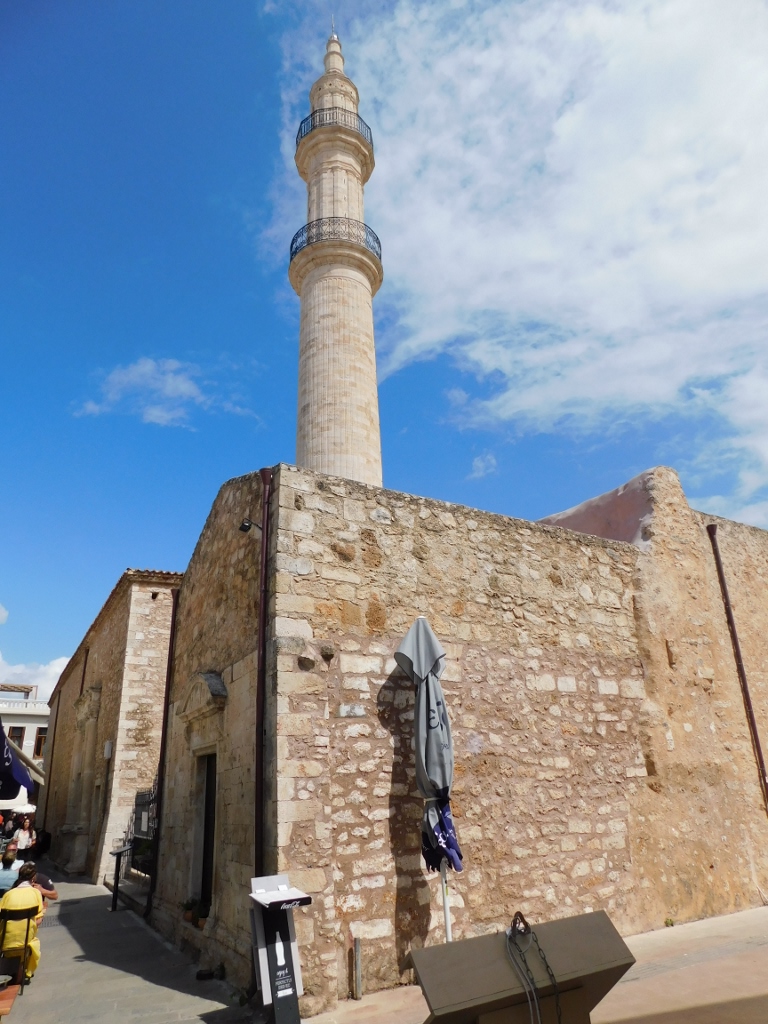 Neratze Mosque
Neratze Mosque
The edifice was originally a church built in the 15th century, but when the Ottoman Turks came here they turned it into a mosque and named it Deli Hüseyin Pasha Mosque. Today, the building is used as a conservatory hall.
The minaret was built in 1890, i.e., in 1308 according to the Islamic calendar, which can be seen nicely on a stone plaque built into the minaret. By the way, ever since I first travelled in Egypt I tried to learn how numerals are written in Arabic. Well, sometimes this can be useful even if I’m not in Egypt.
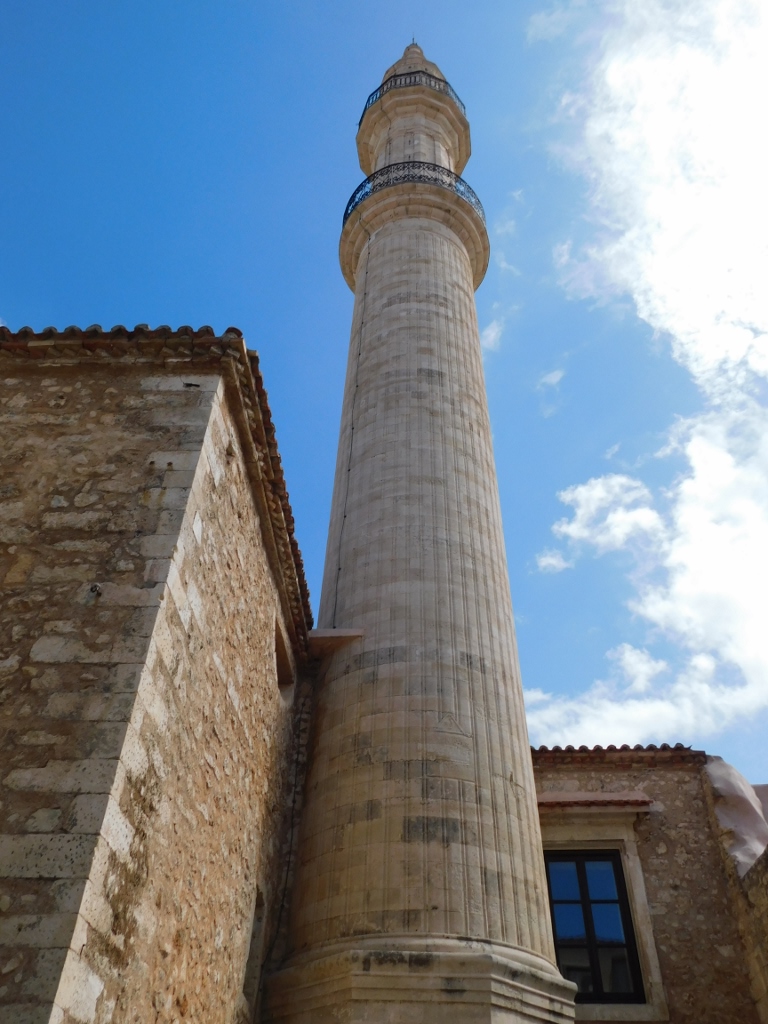 Neratze Mosque, a detail
Neratze Mosque, a detail
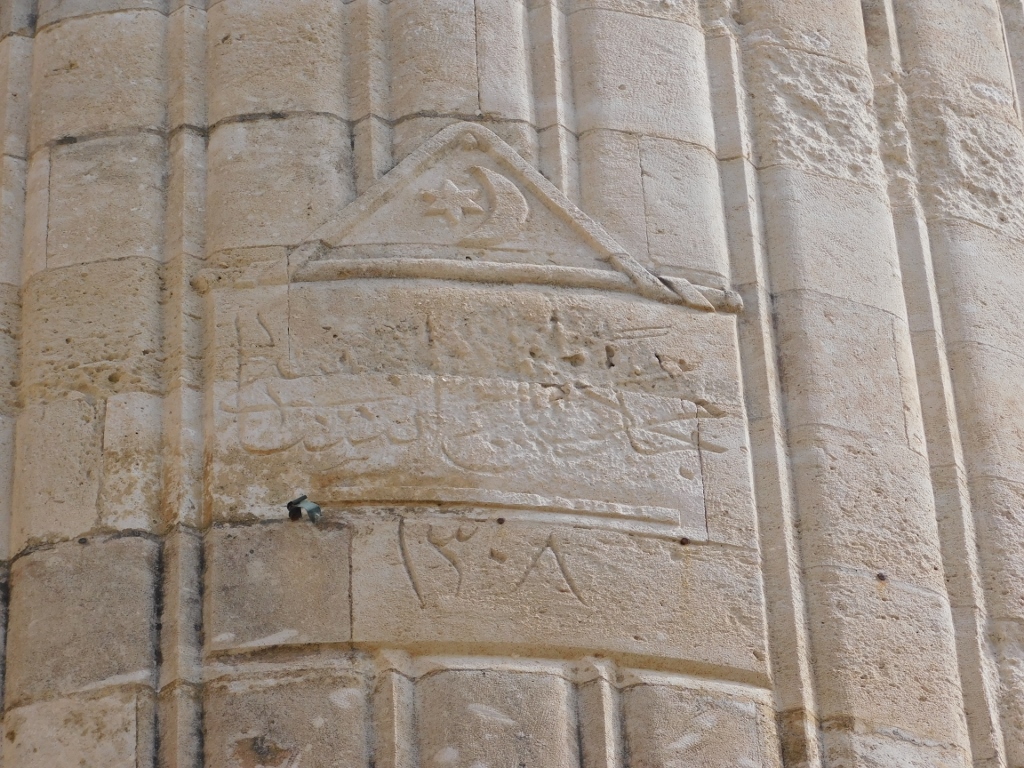 Neratze Mosque, a detail
Neratze Mosque, a detail
Then I went to the spacious Mikrasiaton Square from where you can see the mosque even better.
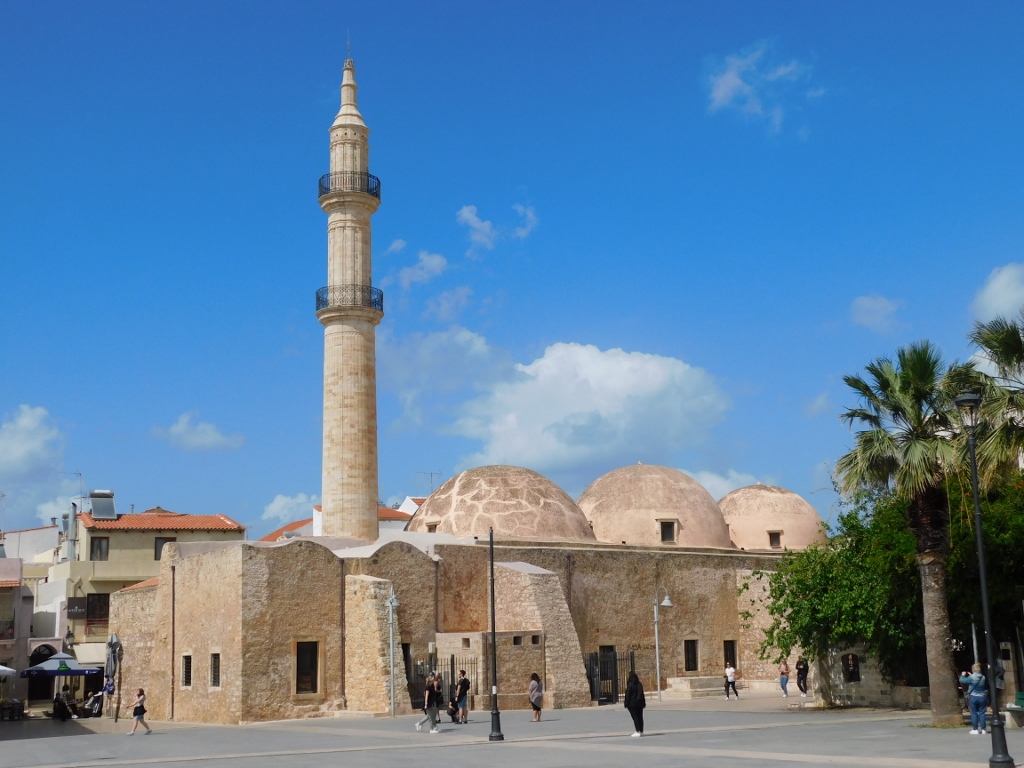 Neratze Mosque
Neratze Mosque
From this square one can also see the Archaeological Museum of Rethimno. In order to get to the museum from Mikrasiaton Square, one needs to walk through the Venetian Gate.
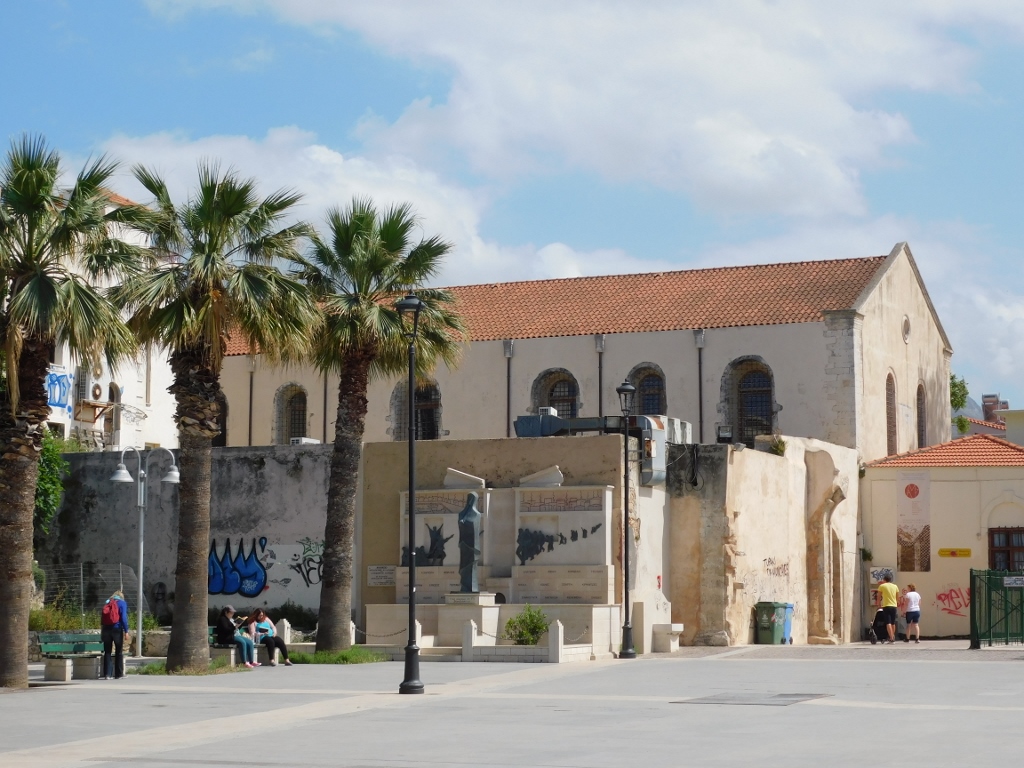 Archaeological Museum of Rethimno
Archaeological Museum of Rethimno
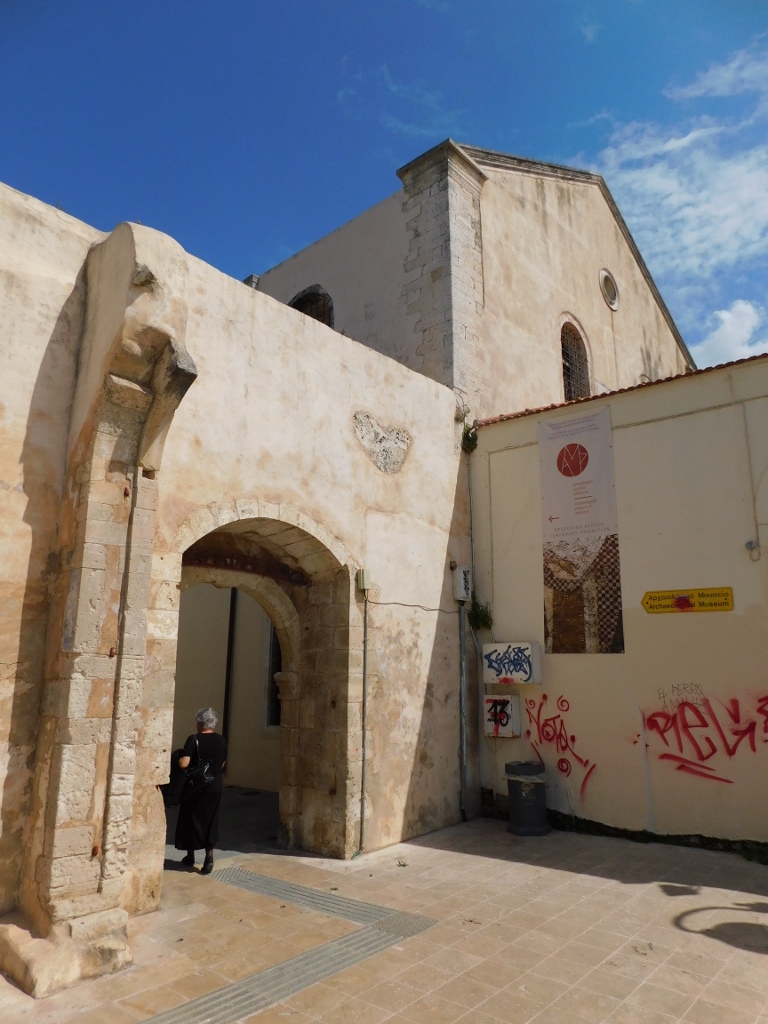 Venetian Gate
Venetian Gate
Bearing in mind my short stay in Rethimno, I did not plan to go to the museum, but I did walk through the gate and past the entrance into the museum.
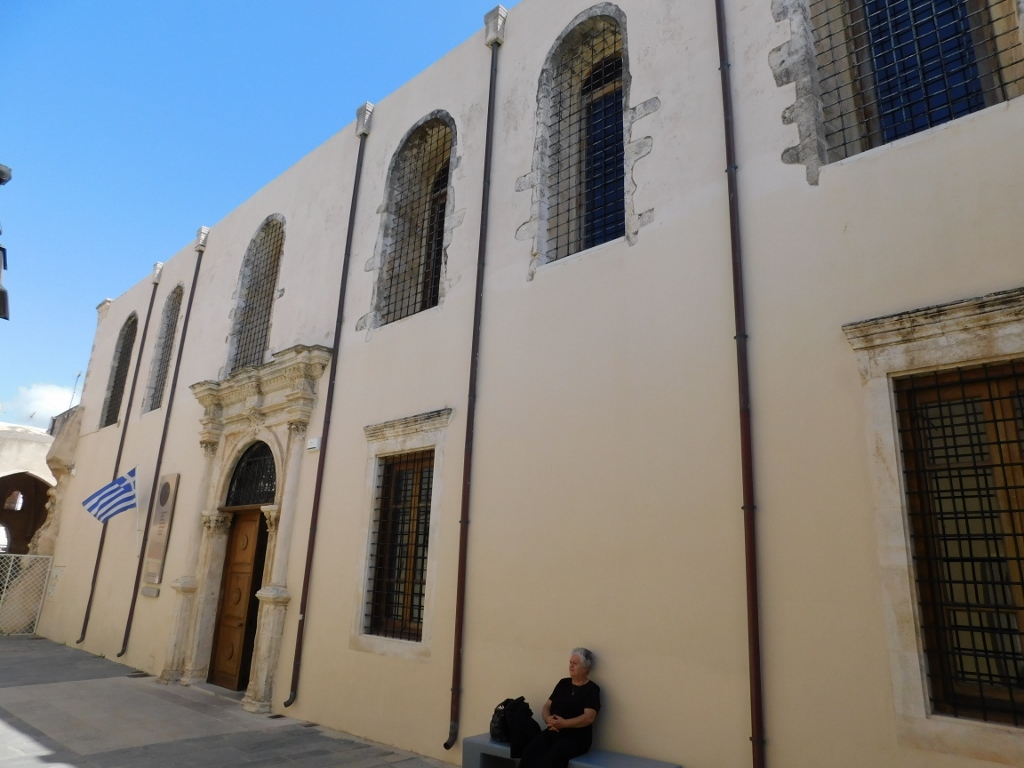 Entrance into the Archaeological Museum of Rethimno
Entrance into the Archaeological Museum of Rethimno
Instead, I continued with my walk and then suddenly I got into an apparently unbelievable crowd. In fact, I reached the streets that were full of shops and therefore there were a lot of tourists who liked to walk and shop there. I was not amused at all. I just took a couple of photos and wanted to get out of that part of the town. By the way, let me just mention that I got an impression that Rethimno is the most popular place on Crete, at least as far as tourists are concerned.
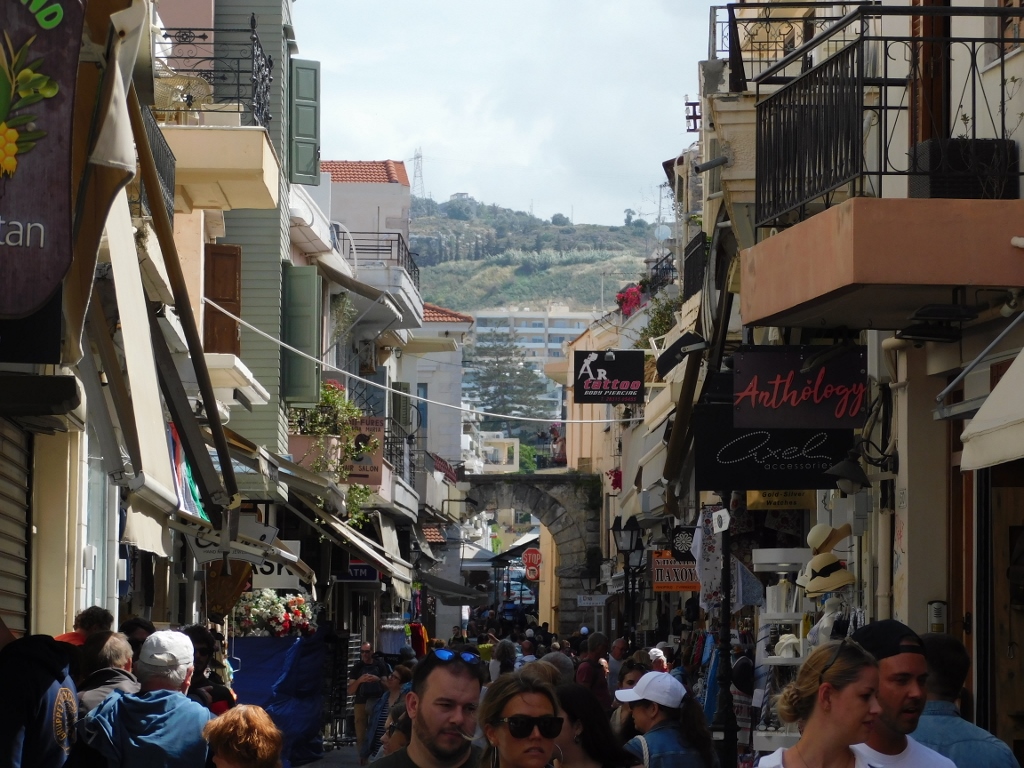 Rethimno, a detail
Rethimno, a detail
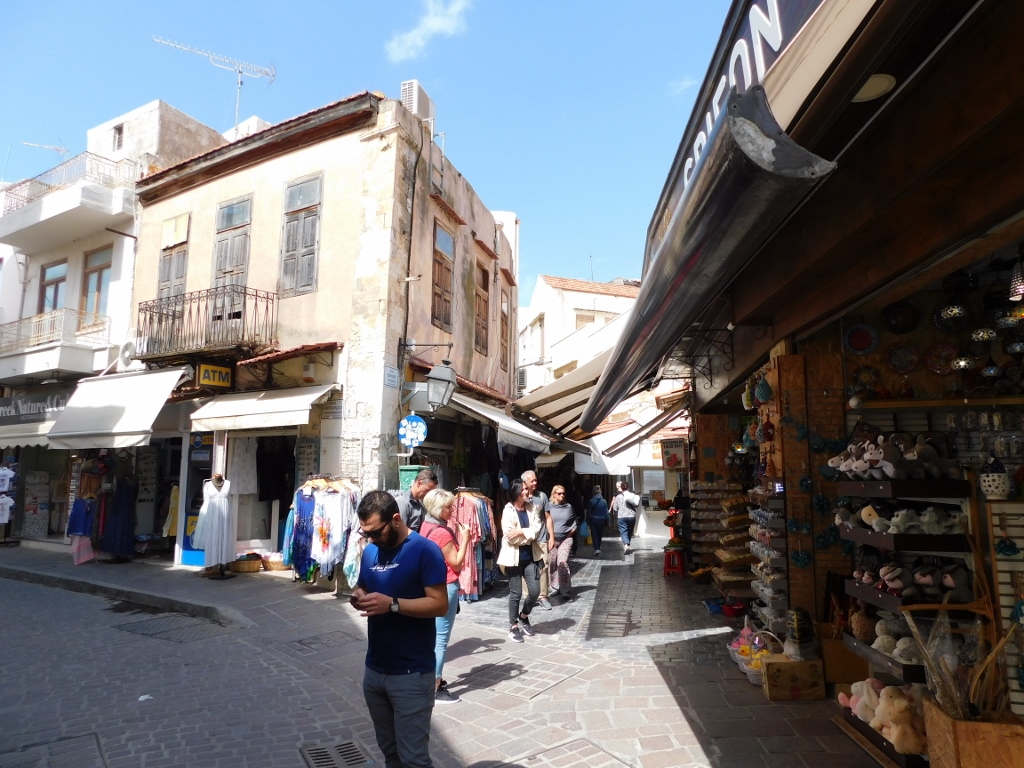 Rethimno, a detail
Rethimno, a detail
Although there were tourists in other places as well, there were fewer shops and more cafés and restaurants, so the tourists were mostly seated. This allowed me to take a photo of one of the most beautiful monuments without any people around. This is not always easy. The monument in question is Rimondi Fountain from 1626.
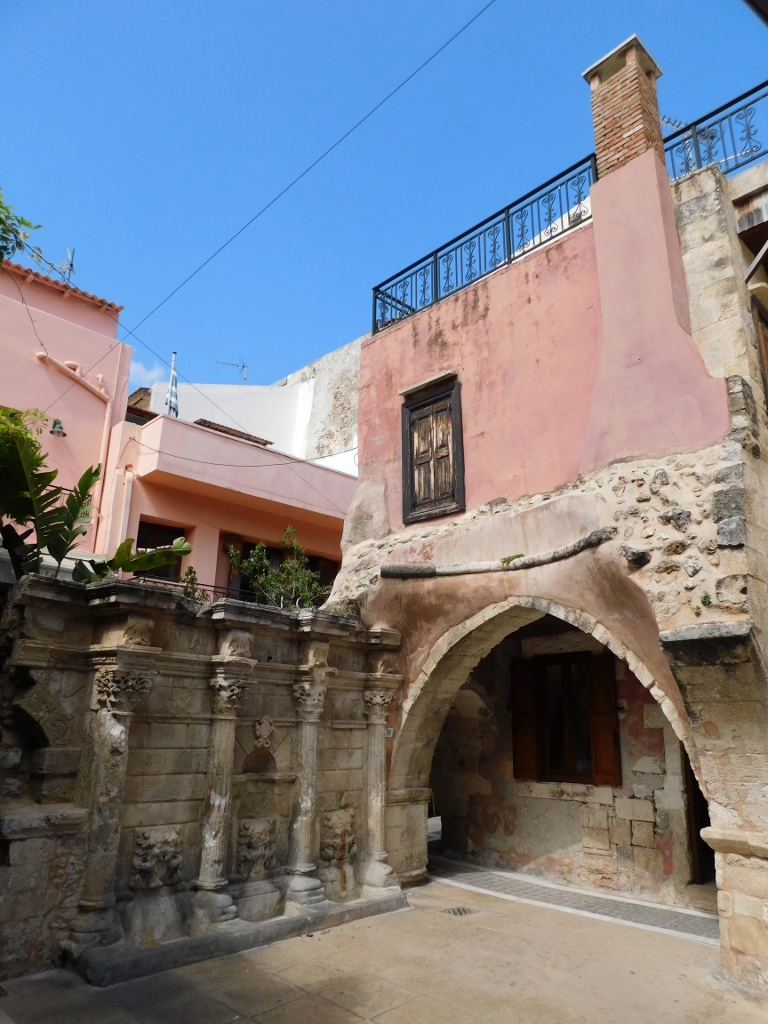 Rimondi Fountain
Rimondi Fountain
There used to be a problem with water supply throughout Crete, so the Venetians built aqueducts and fountains, but out of all the fountains from the period of the Venetian rule only this one has survived.
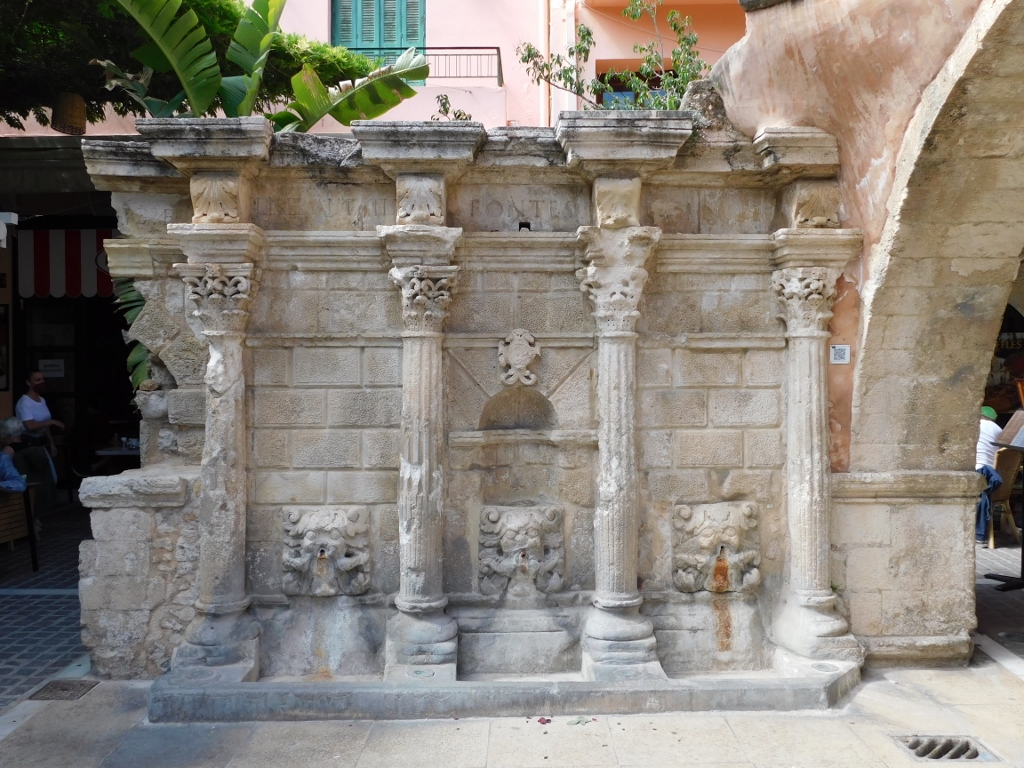 Rimondi Fountain
Rimondi Fountain
Not far from the fountain there is also the Loggia, a building from the first half of the 16th century.
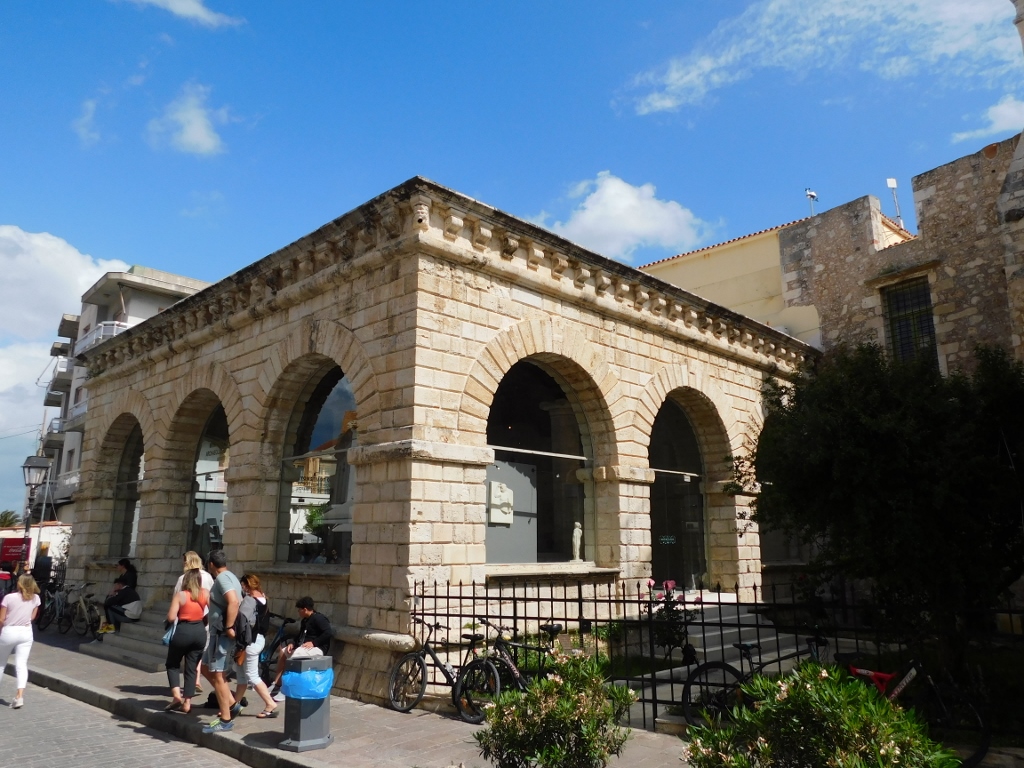 Loggia
Loggia
This used to be a public building used by Venetian nobles as a venue for meetings and it probably also served as some kind of a club where they would gather.
During the Ottoman rule, the Loggia was turned into a mosque. From 1951 until recently, the building hosted the city’s archaeological museum, but today there is a shop inside where you can buy copies of archaeological artefacts.
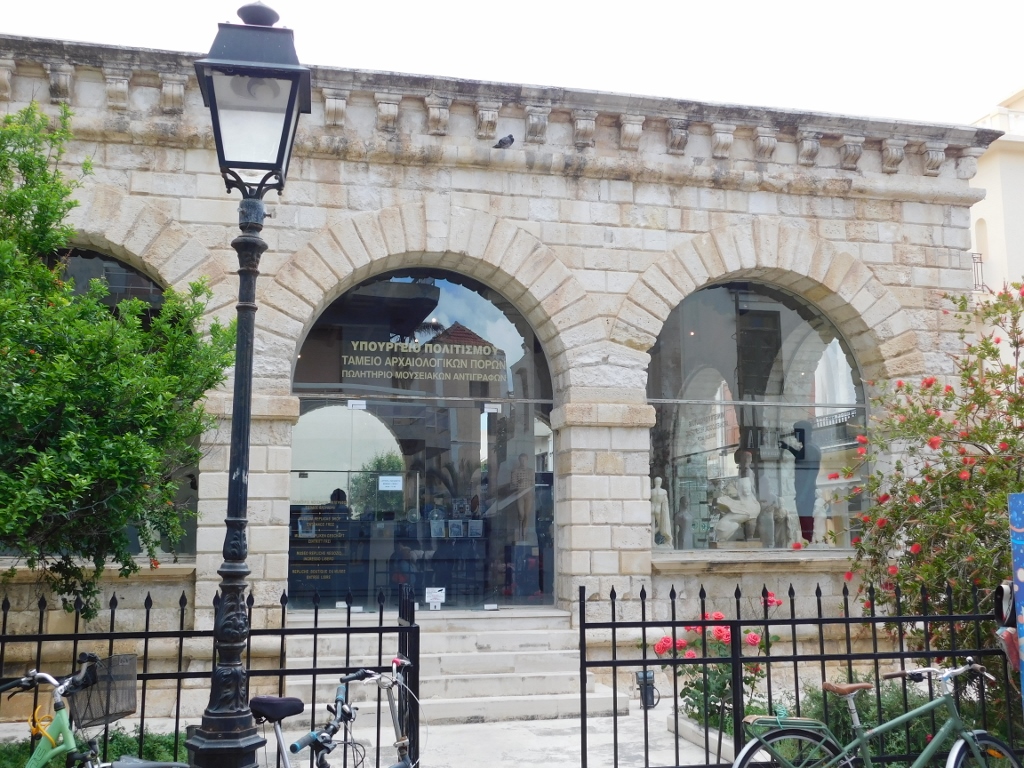 Loggia
Loggia
Now I walked to the nearby Venetian Port. This one in Rethimno which is nowadays used for fishing boats was certainly less impressive than the one in Chania, but there was a lighthouse here as well. This one in Rethimno was built in the first half of the 19th century.
 Venetian Port in Rethimno
Venetian Port in Rethimno
From here I could also look in the eastbound direction where there is a long sand beach. As far as I could gather, the beach seen in the photo below is not used for swimming, probably because there is the Venetian Port on one side and a contemporary marina on the other. If you want to swim in Rethimno, which is certainly recommended, then you need to continue further in this direction for about a kilometre where you will get to the real beach with sun loungers, parasols and numerous other swimmers.
 Rethimno
Rethimno
I did not go swimming, opting rather to go back leisurely to the area of the old town of Rethimno.